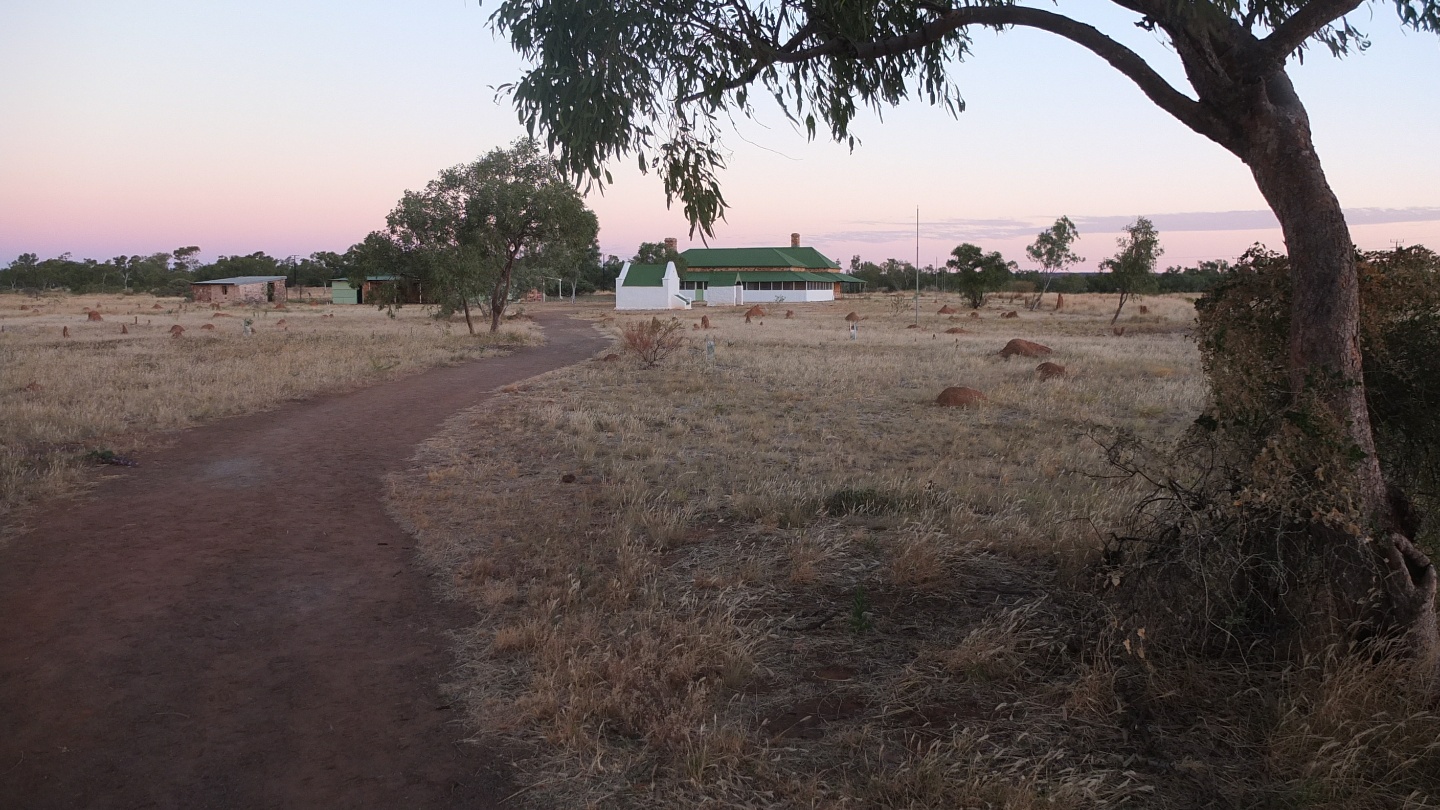
Today, I’ve spent most of my time in the library. The wind is cold again and this morning was hard to get my hand warm as I woke up early and nothing was open yet. I want to update my blog before I leave Tennant Creek because I’m not sure when I will get another connection. It might be in Katherine. It’s not a big deal :-) I won’t stay here another night as I have planned yesterday. There is too much Aboriginals wandering around and I don’t want to create trouble by sleeping somewhere they would maybe! I will cycle few kilometres out of town and will find a nice spot. I’m not worried about that.
Map.
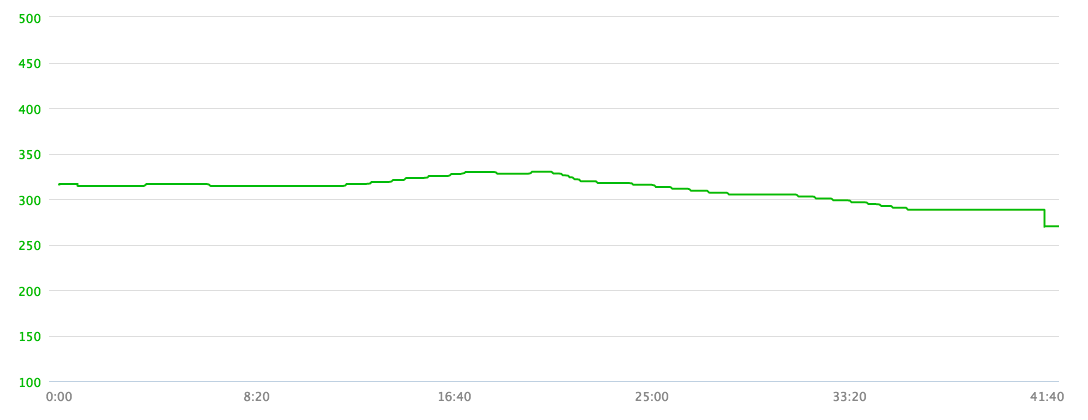
Elevation.
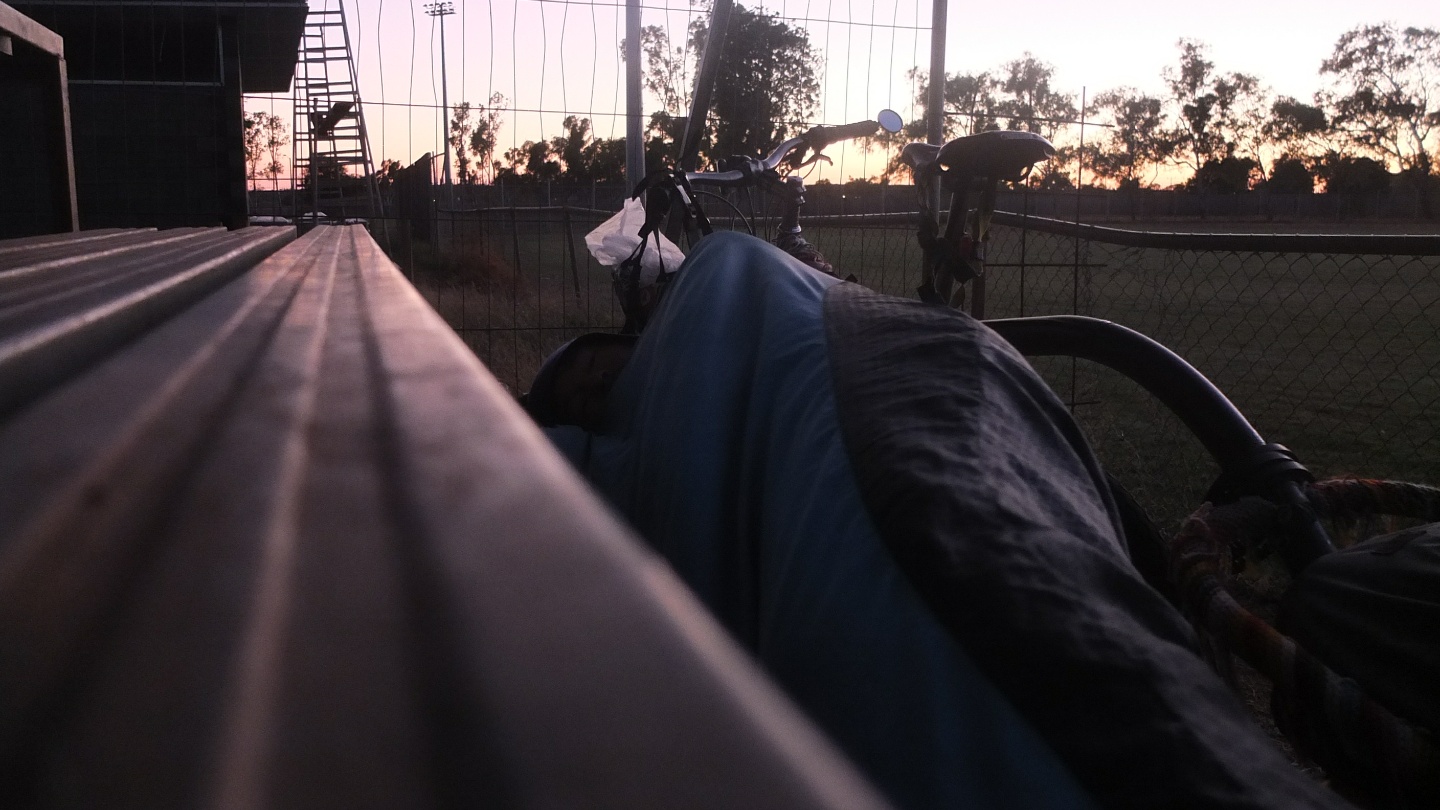
Last night was good and a bit cool this morning. I’ve packed everything before the wind started and then it was cold! Bloody wind! I’ve been cycling around town looking for a warm place until I found a cafe. Good :-)
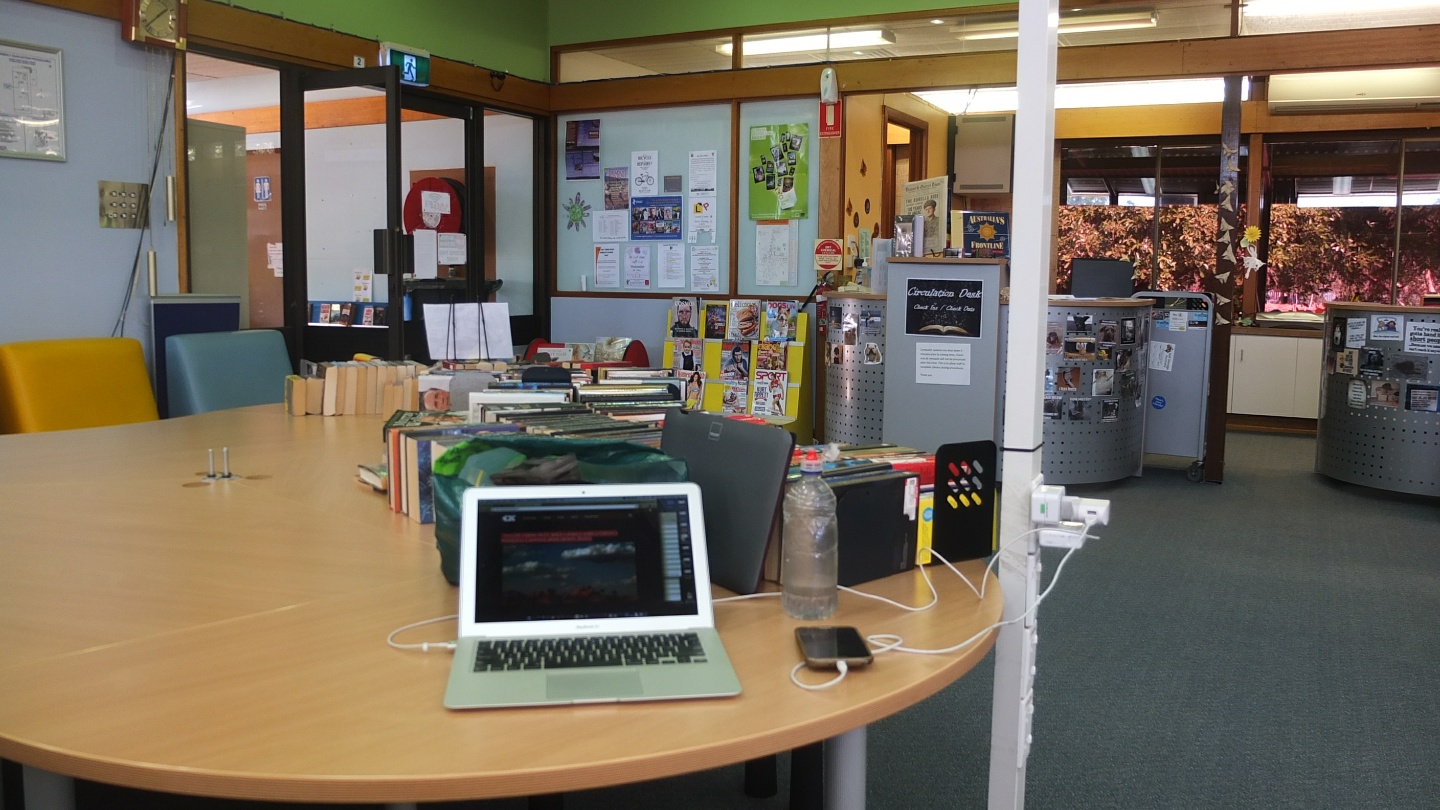
Right after having taken a nice hot chocolate I went to the library. I won’t go anywhere today :-)
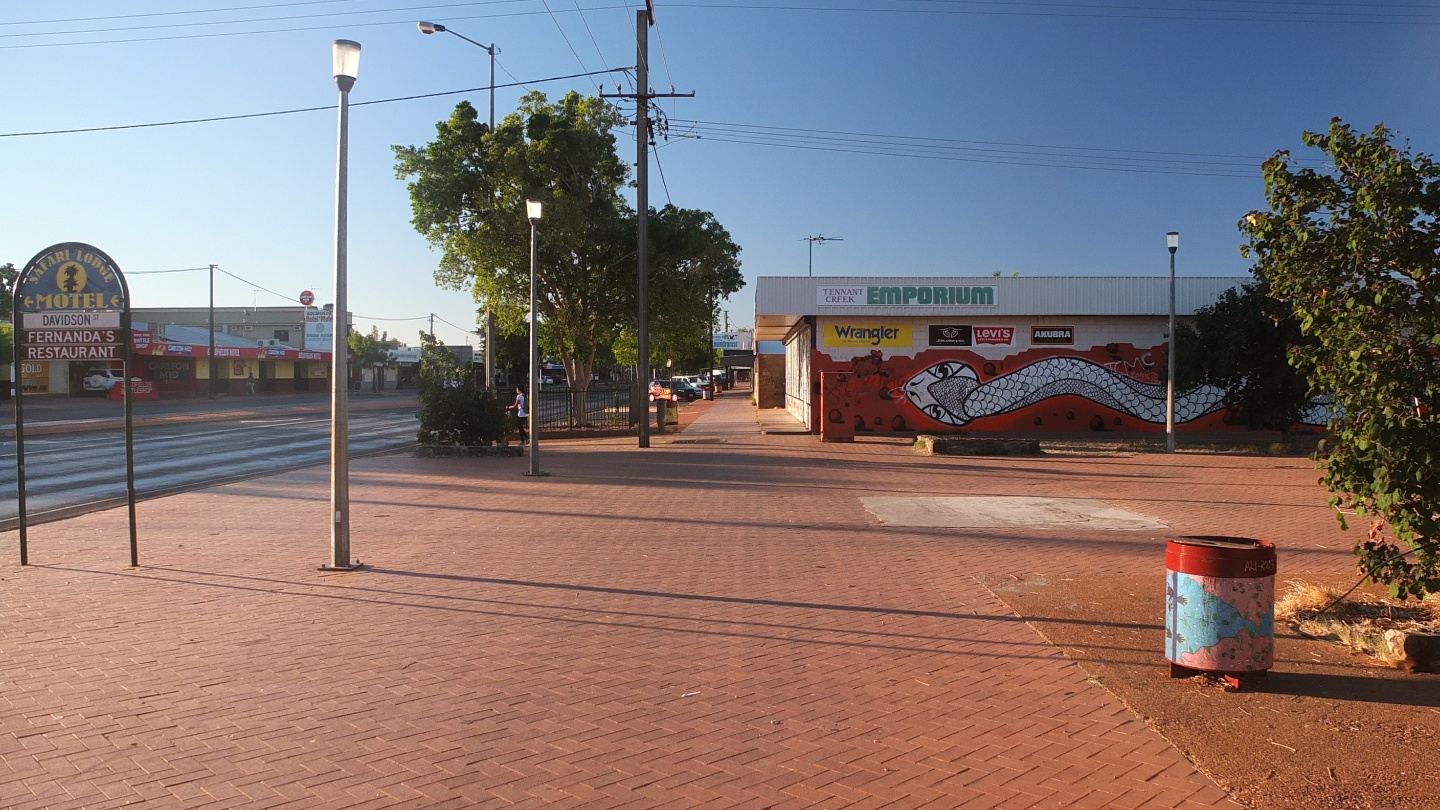
It’s now passed five and the library kicked me out :-) I’ve filled up my bottle wish fresh water, got some cash. I’m now ready to go!
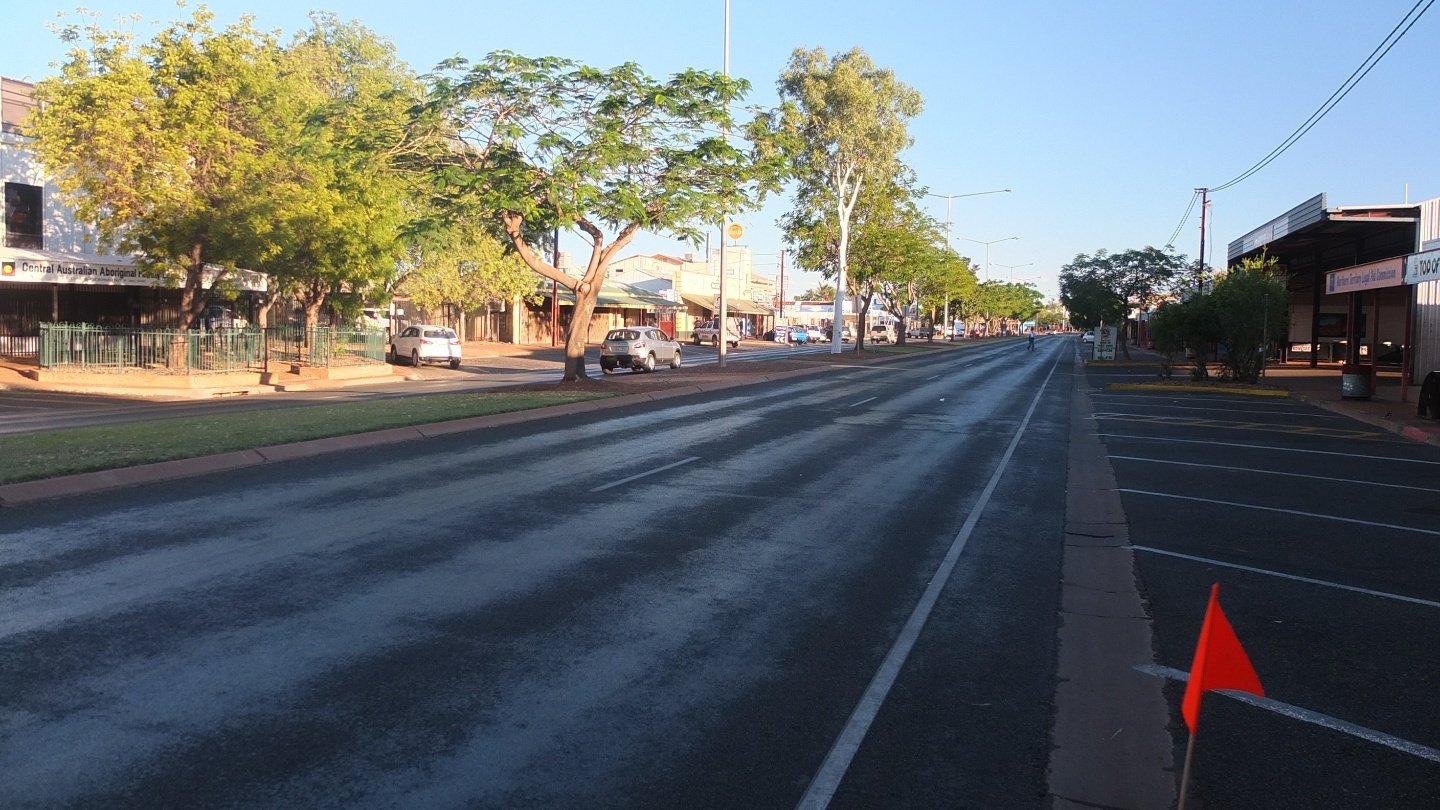
Tennant Creek has nothing special to visit and even if we are Thursday, everything looks quiet.
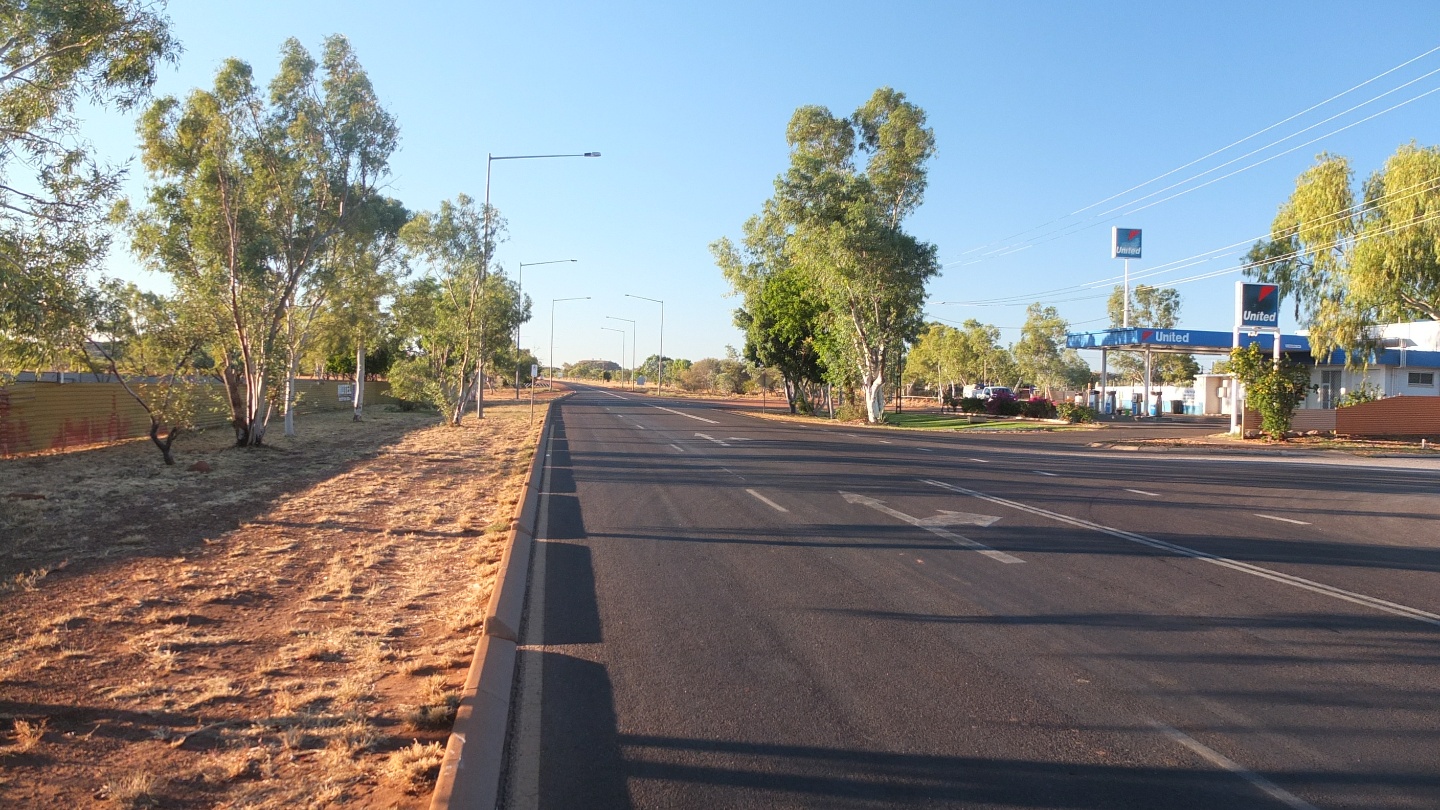
Ok, let’s go.
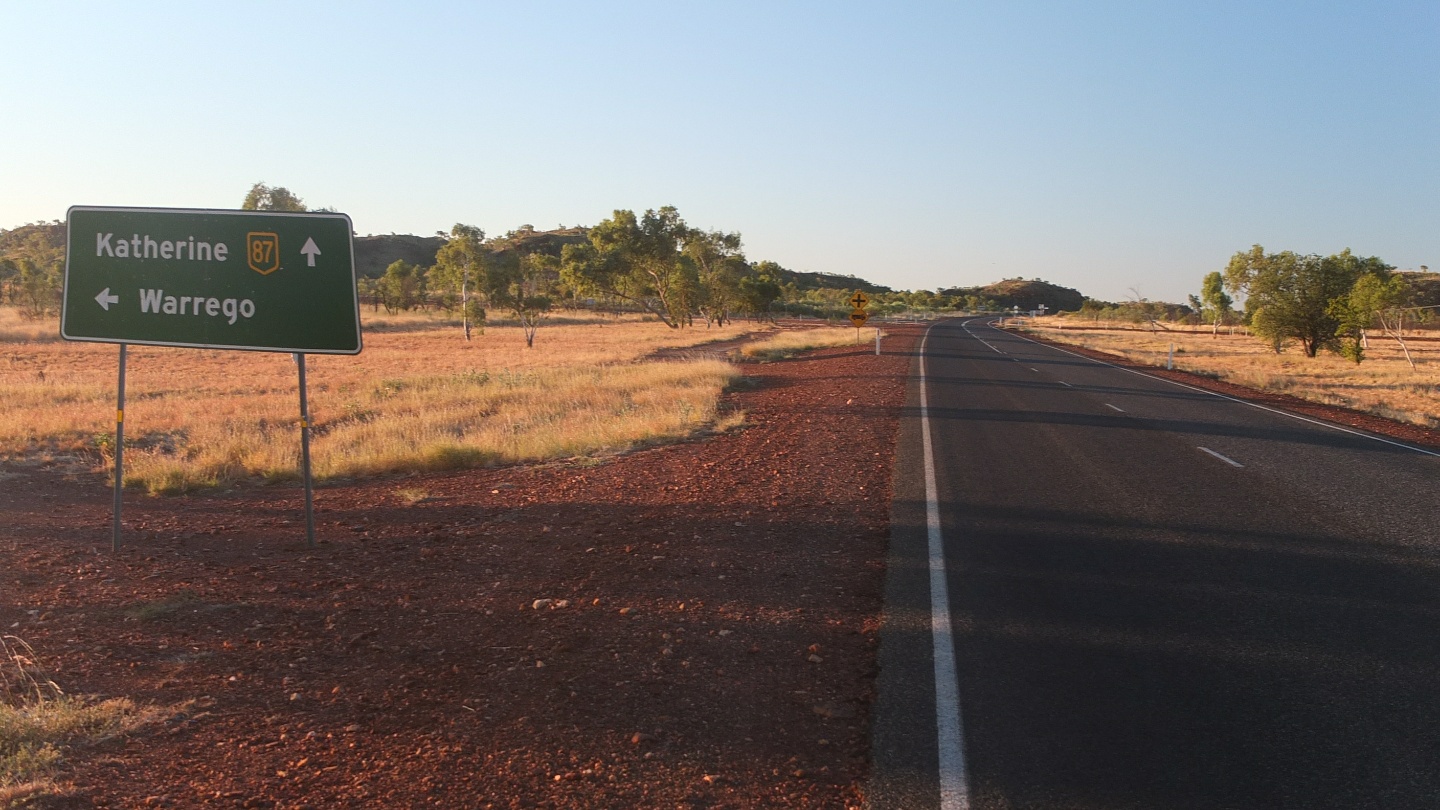
Katherine, straight! (to change).
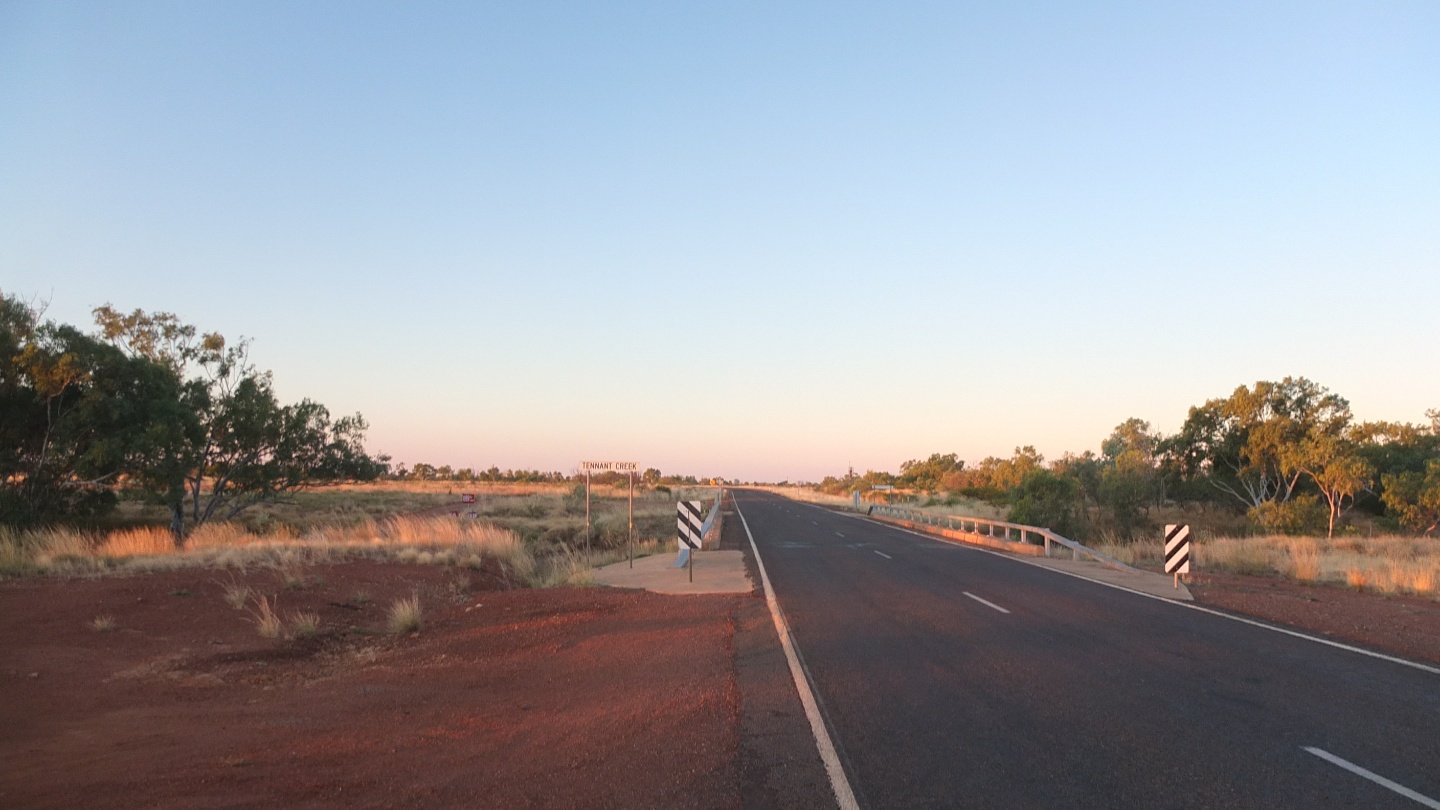
I’ve done something like 10km and I’m reaching the REAL Tennant Creek. Interesting.
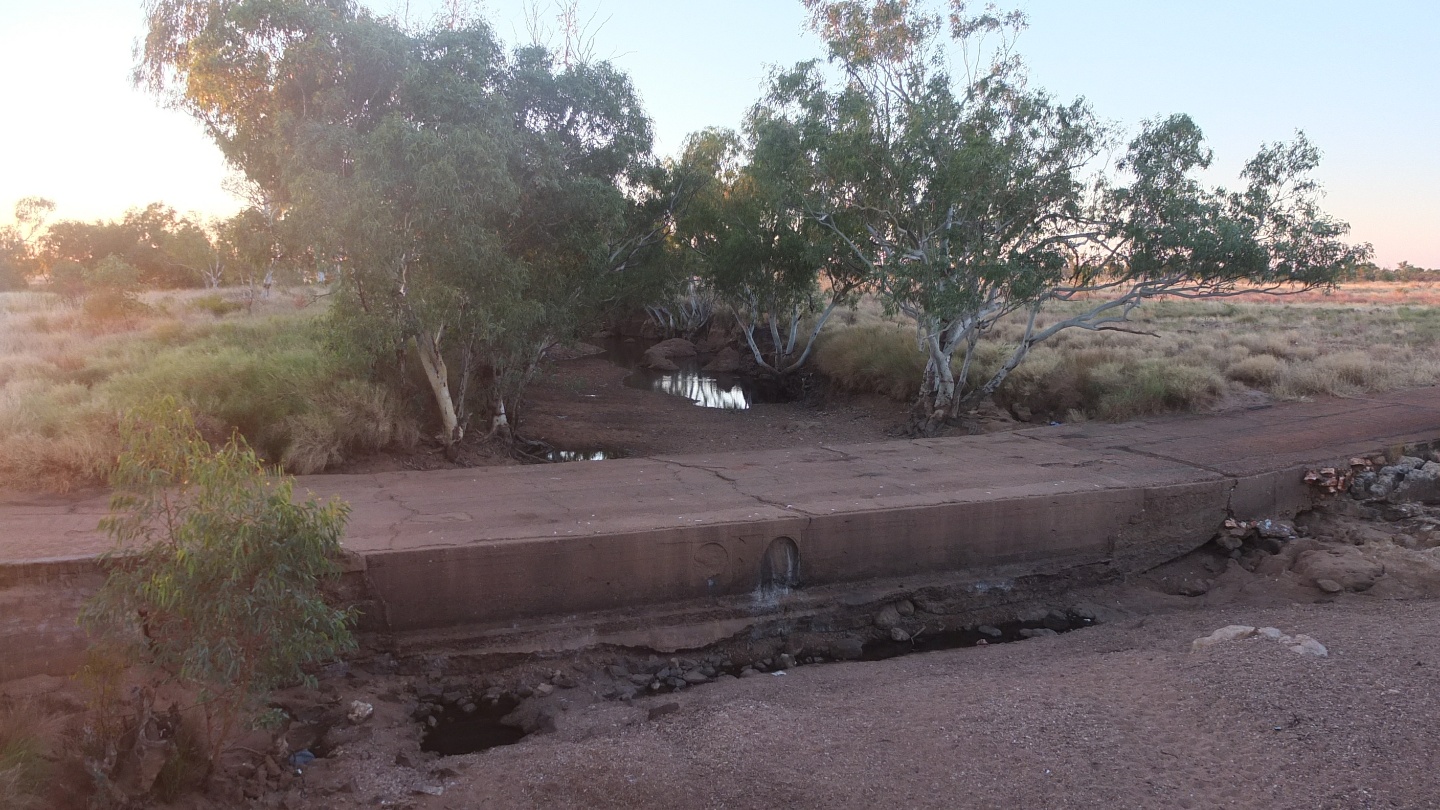
There is water! That’s the first time I can see water in one of those creek. I can feel I’m going north :-)
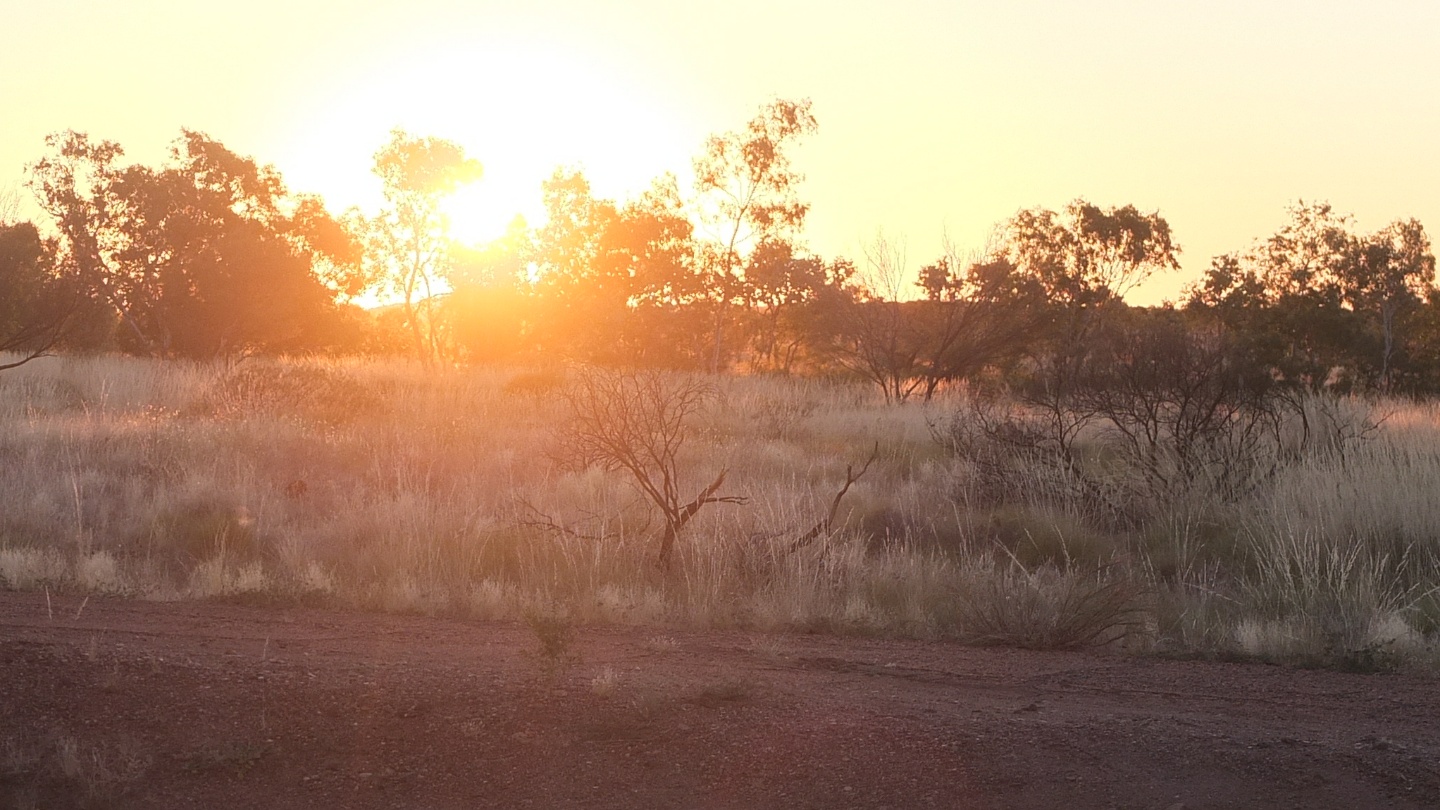
The sun is low in the sky, I will find a spot soon I guess.
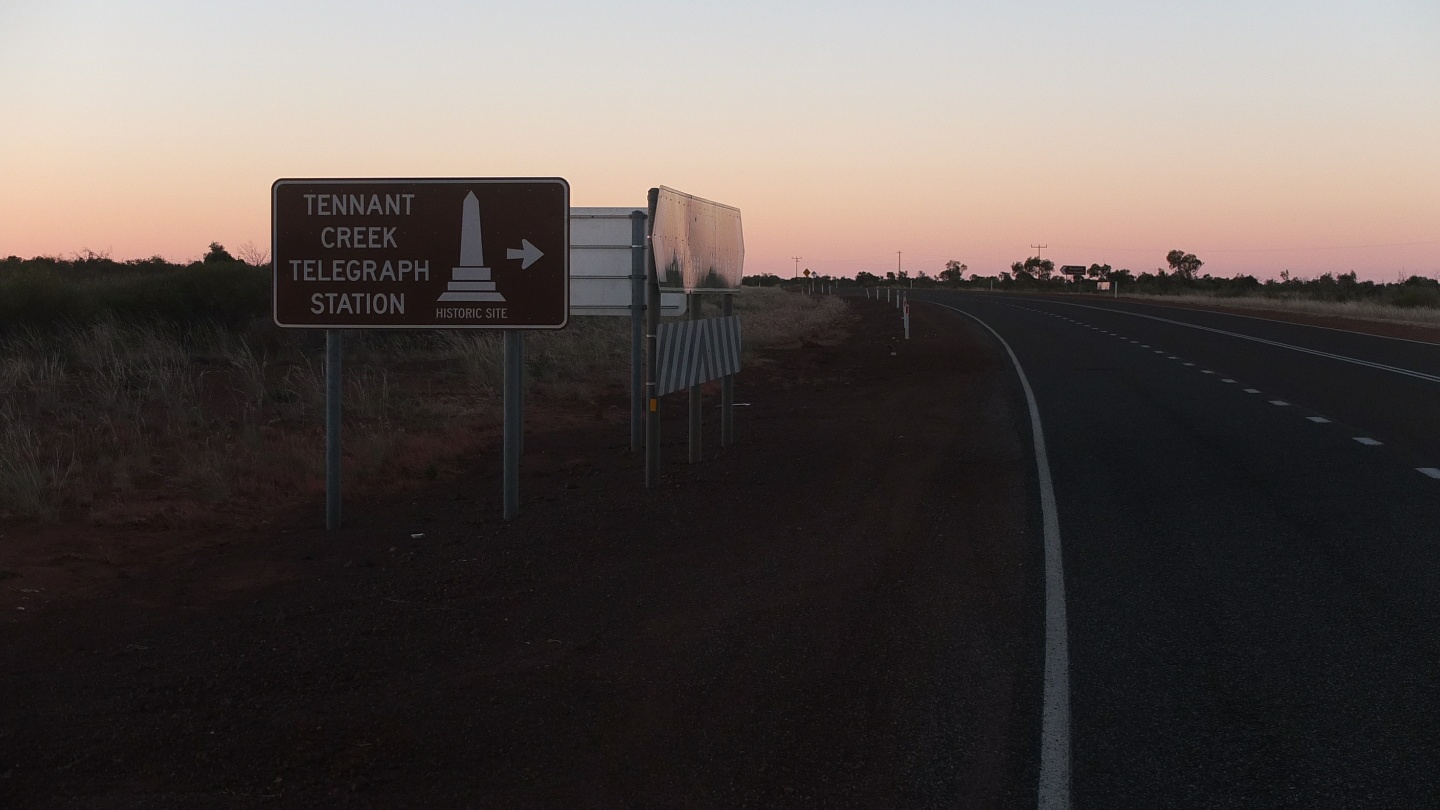
Tennant Creek Telegraph Station. Mmmh…
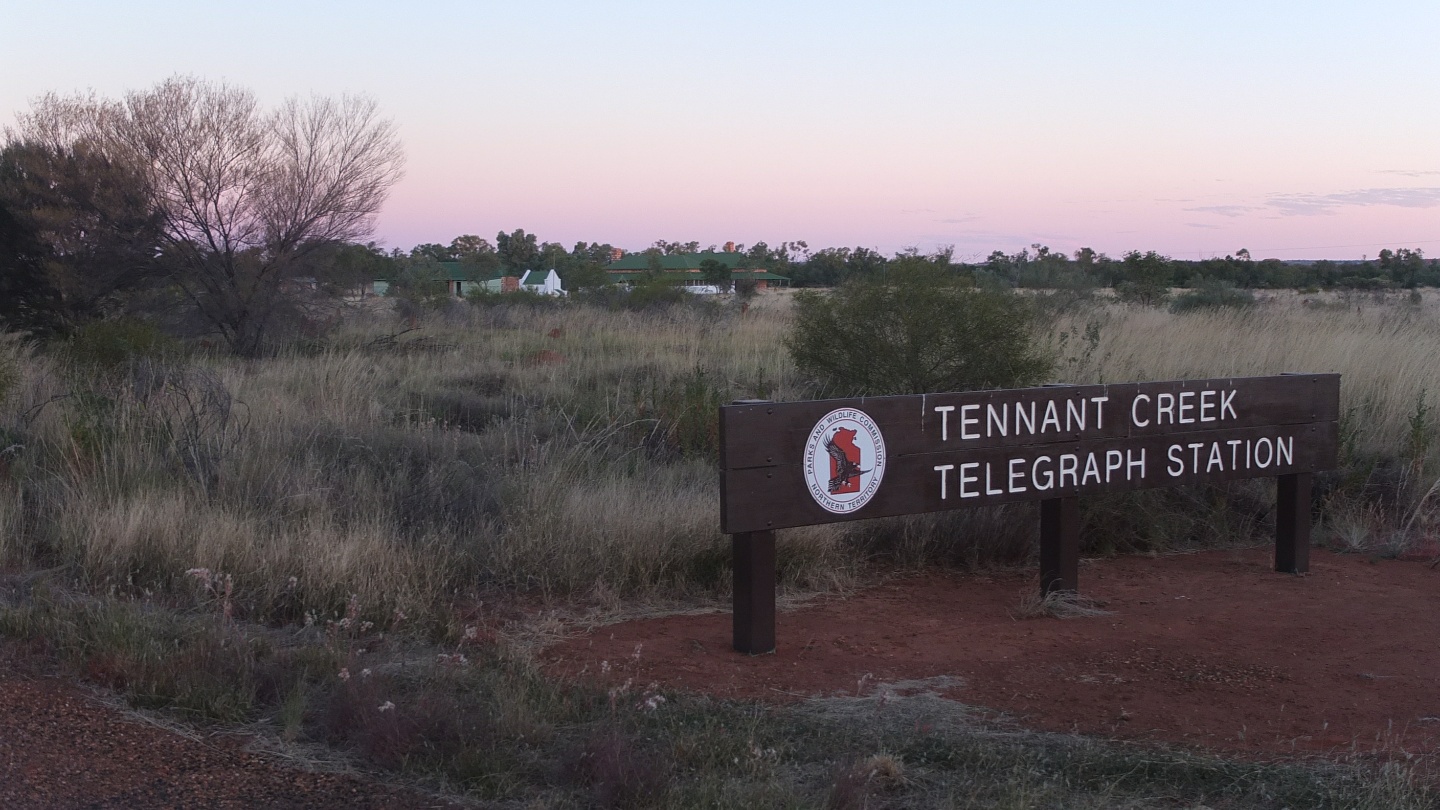
Tennant Creek Telegraph Station. This place sounds good to me :-)
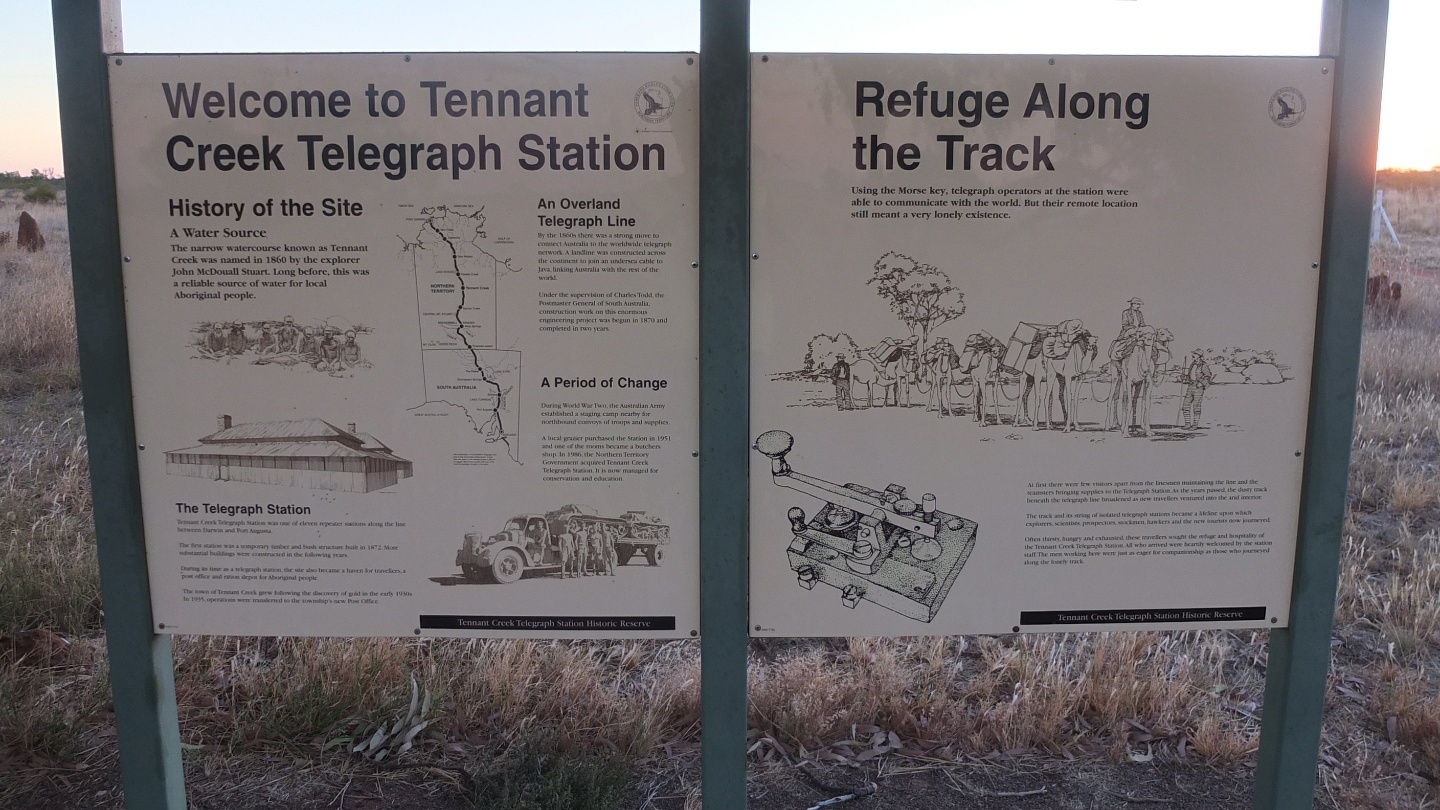
I will do the visit and then pitch my tent somewhere.
History of the Site
A Water Source
The narrow water source known as Tennant Creek was named in 1860 by the explorer John McDouall Stuart. Long before, this was a reliable source of water for local Aboriginal people.
The Telegraph Station
Tennant Creek Telegraph Station was one of eleven repeater stations along the line between Darwin and Port Augusta.
The first station was a temporary timber and bush structure built in 1872. More substantial buildings were constructed in the following years.
During its time as a telegraph station, the site also became a haven for travellers, a post office and ration depot for Aboriginal people.
The town of Tennant Creek grew following the discovery of gold in the early 1930s. In 1935, operations were transferred to the township’s new Post Office.
An Overland Telegraph Line
By the 1860s there was strong move to connect Australia to the worldwide telegraph network. A landline was constructed across the continent to join an undersea cable to Java, linking Australia with the rest of the world.
Under the supervision of Charles Todd, the Postmaster General of South Australia, construction work on this enormous engineering project was begun in 1870 and completed in two years.
A Period of Change
During World War Two, the Australian Army established a staging camp nearby for northbound convoys of troops and supplies.
A local grazier purchased the Station in 1951 and one of the rooms became a butchers shop. In 1986, the Northern Territory Government acquired Tennant Creek Telegraph Station. It is now managed for conservation and education.
Refuge along the track
Using the Morse key, telegraph operators at the station were able to communicate with the world. But their remote location still meant a very lonely existence.
At first there were few visitors apart from the linesmen maintaining the line and the teamsters bringing supplies to the Telegraph Station. As the years passed, the dusty track beneath the telegraph line broadened as new travellers ventured into the arid interior.
The track and its string of isolated telegraph stations became a lifeline upon which explorers, scientists, prospectors, stockmen, hawkers and the new tourists now journeyed.
Often thirsty, hungry and exhausted, these travellers sought the refuge and hospitality of Tennant Creek Telegraph Station. All who arrived were heartily welcomed by the station staff. The men working here were just as eager for companionship as those who journeyed along the lonely track.

And here is the Telegraph Station.
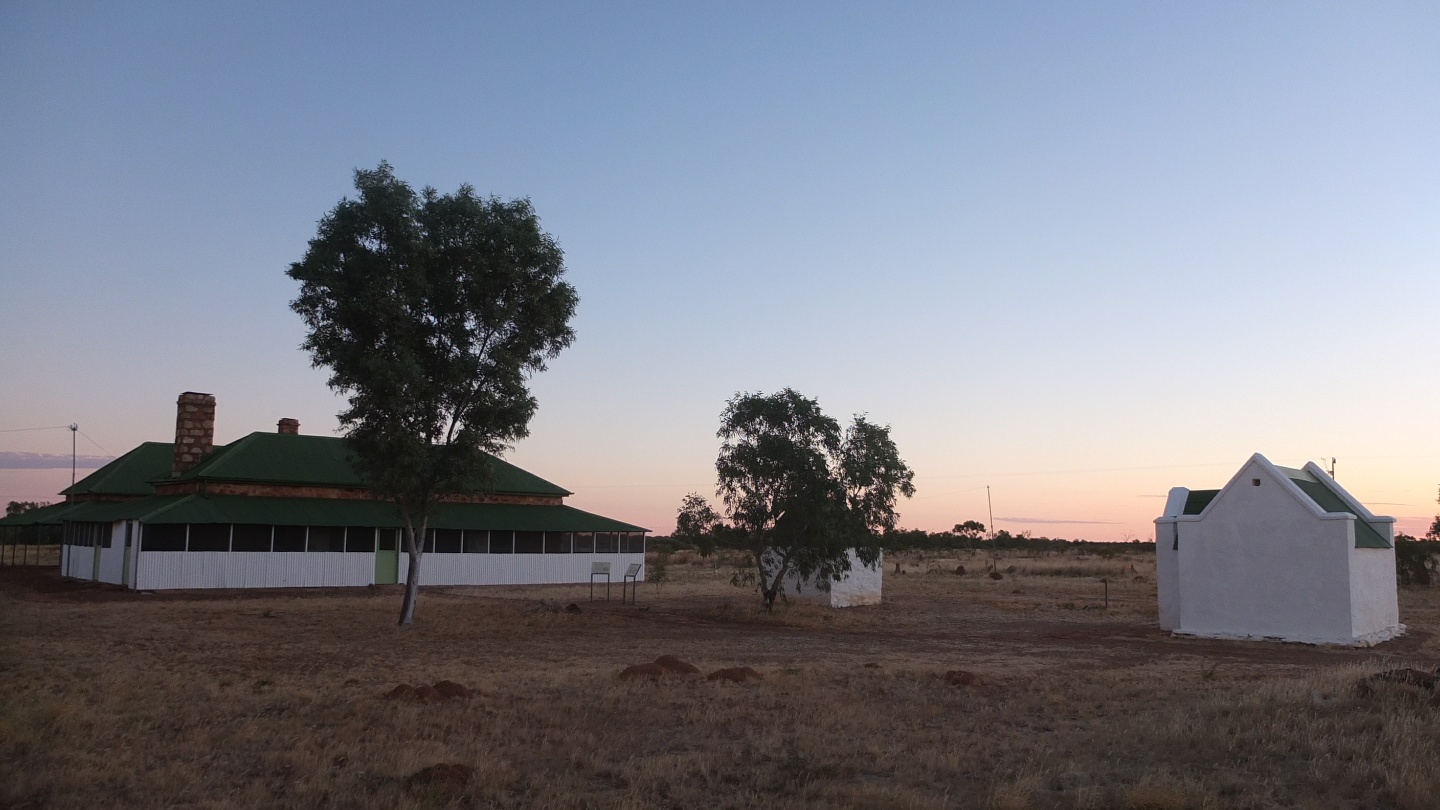
On the right side is the Food Storage.
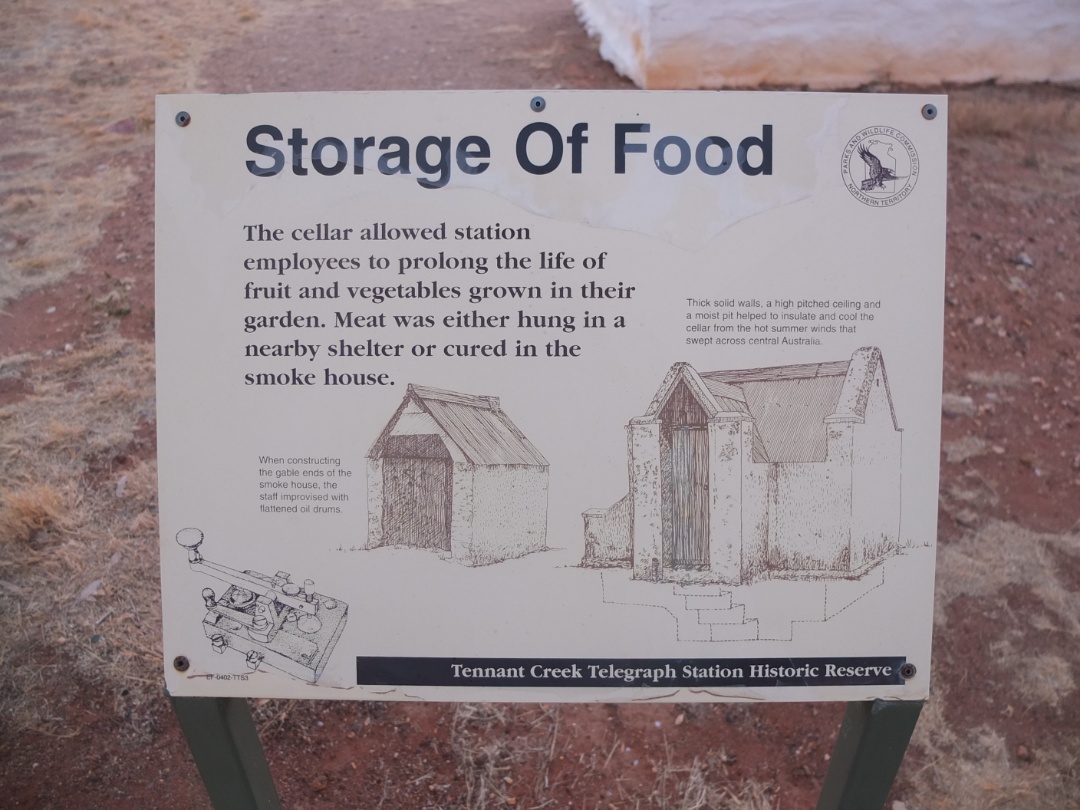
Storage of Food
The cellar allowed station employees to prolong the life of fruits and vegetables grown in their garden. Meat was either hung in a nearby shelter or cured in the smoke house.
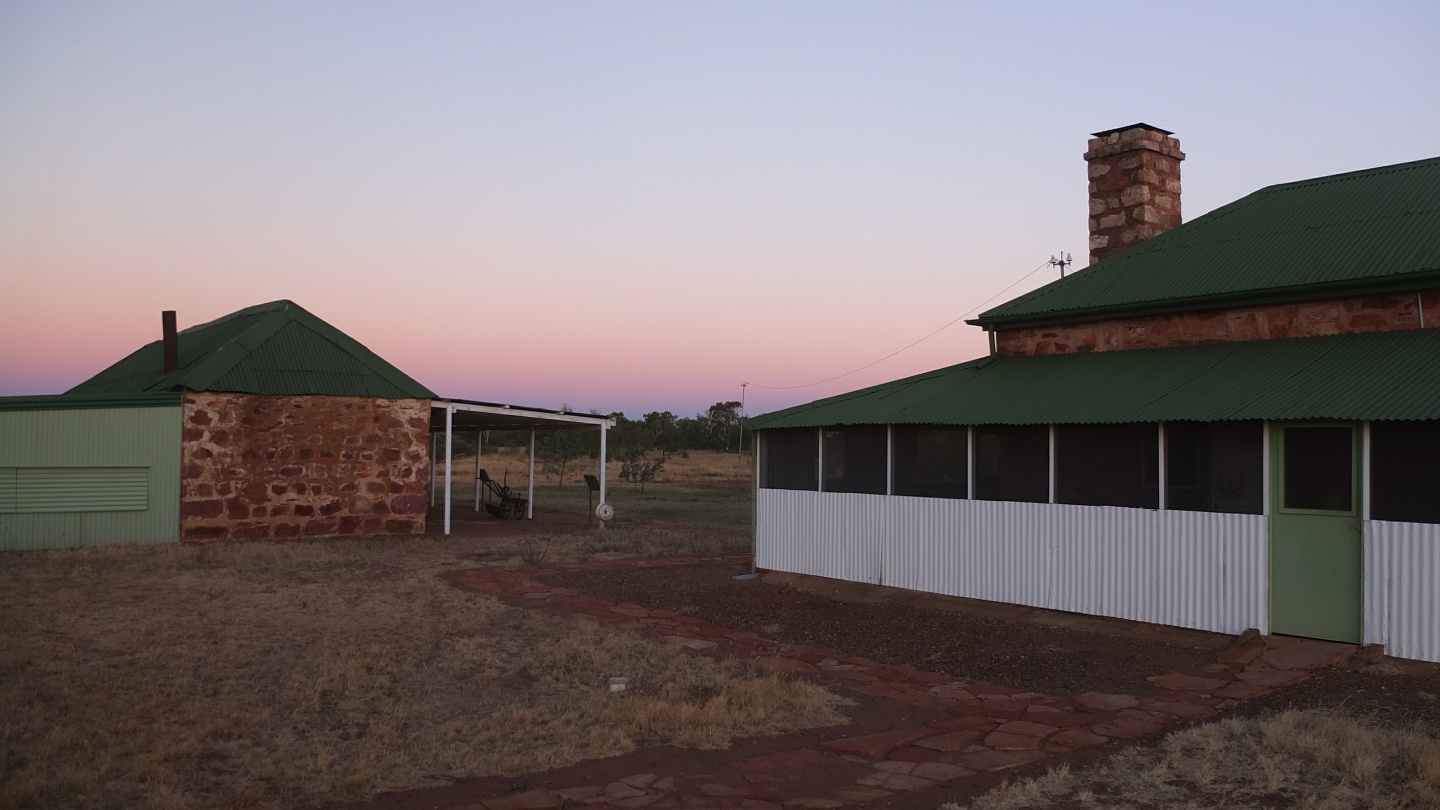
On the right hand side, the Homestead and living Quarters.
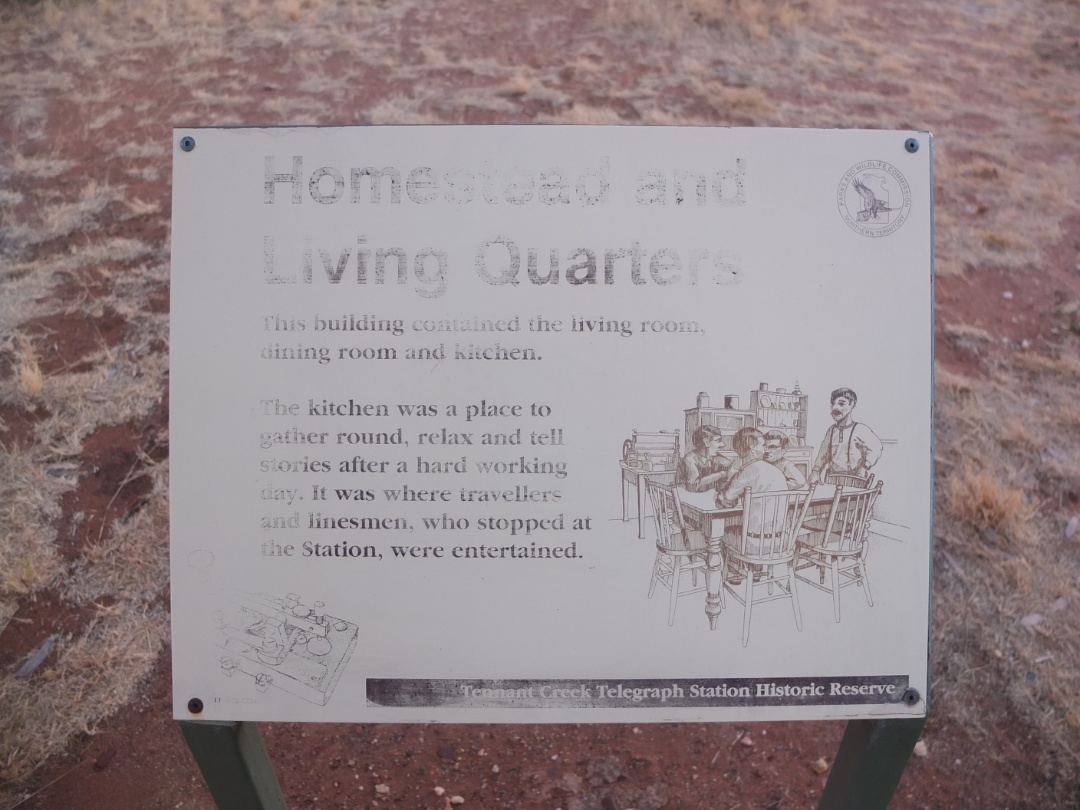
This building contained the living rooms, dining room and kitchen.
The kitchen was a plce to gather round, relax and tell stories after a hard working day. It was where travellers and linesmen, who stopped at the Station, were entertained.
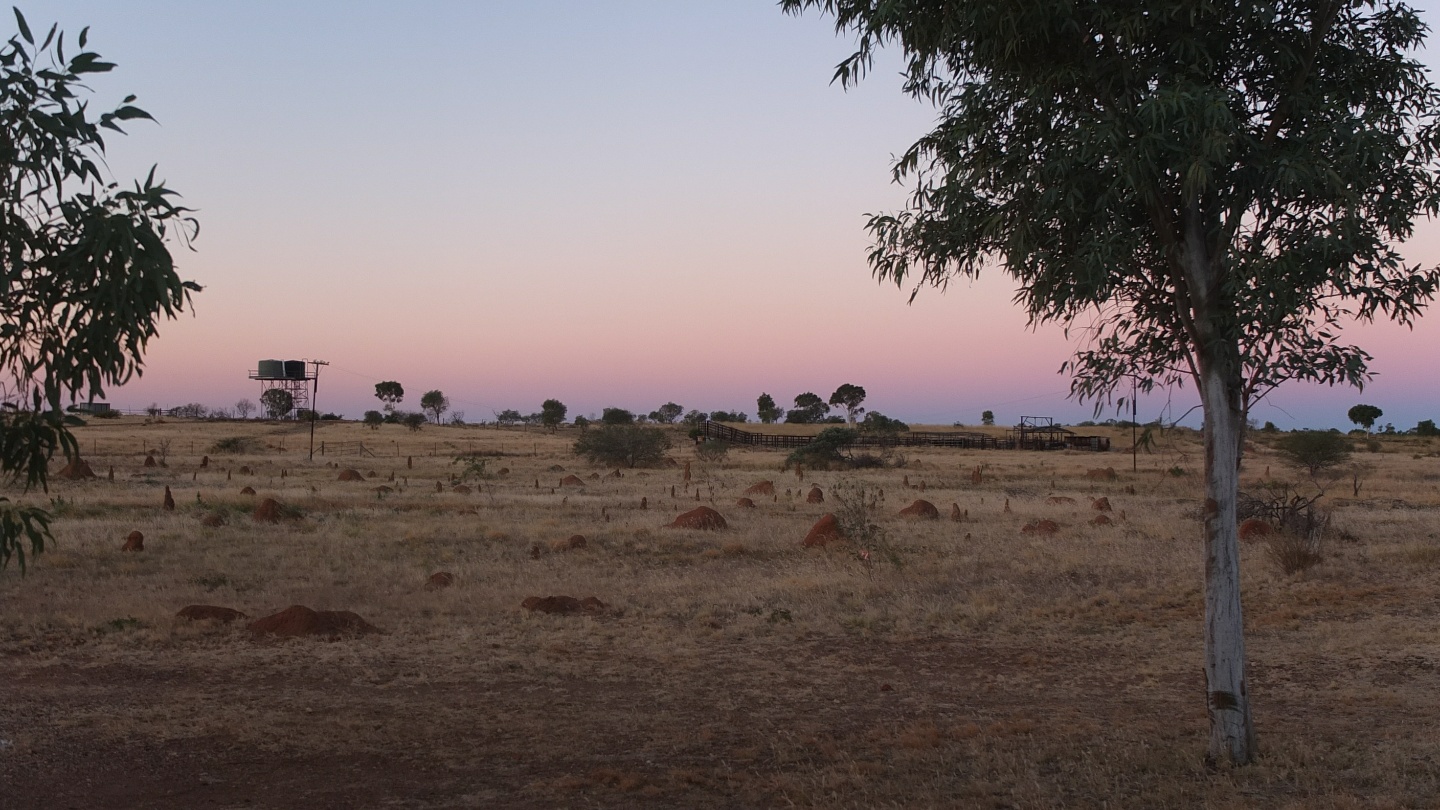
The view! Well, it’s was certainly a bit different at that time.
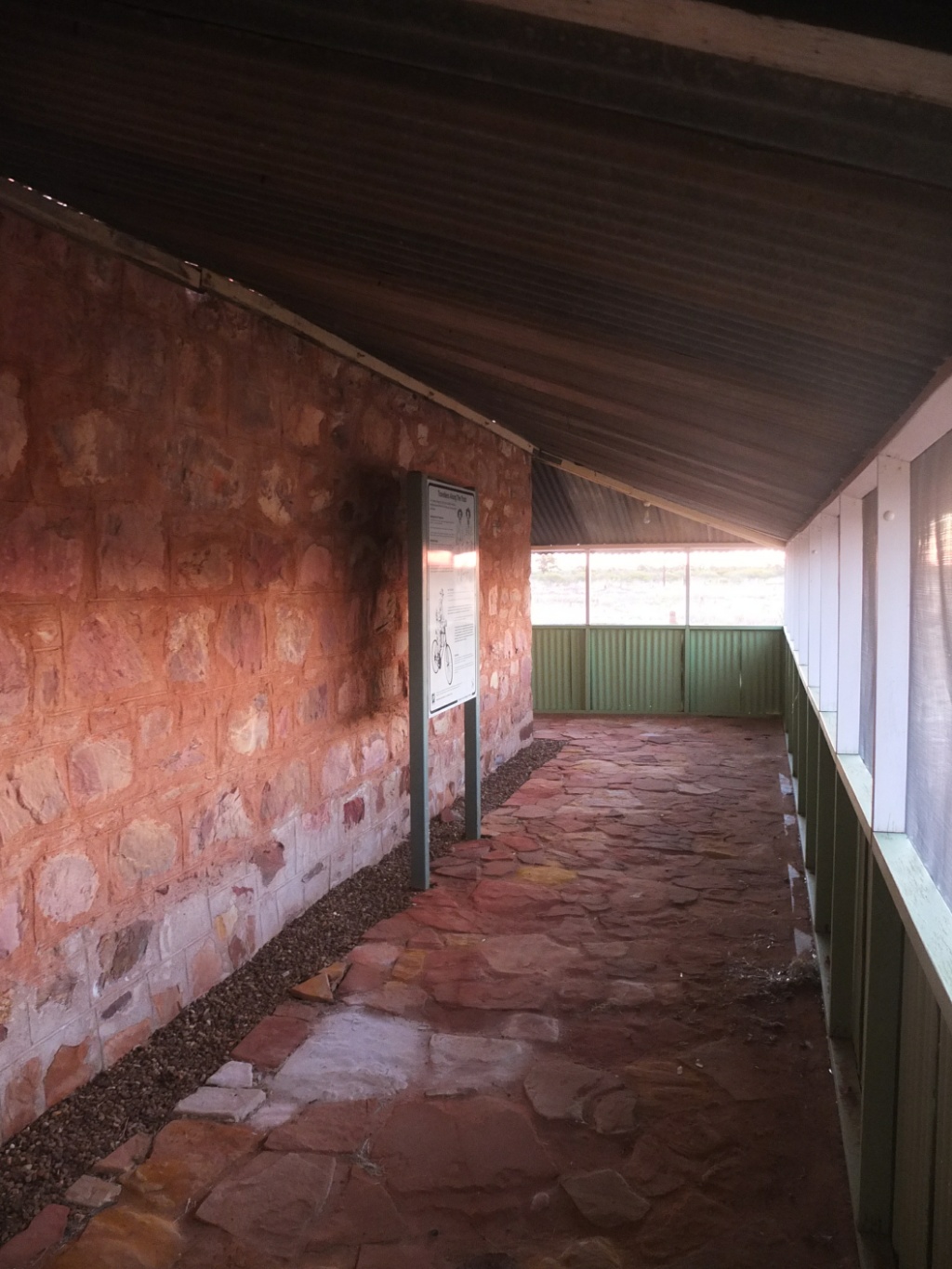
Inside the homestead.
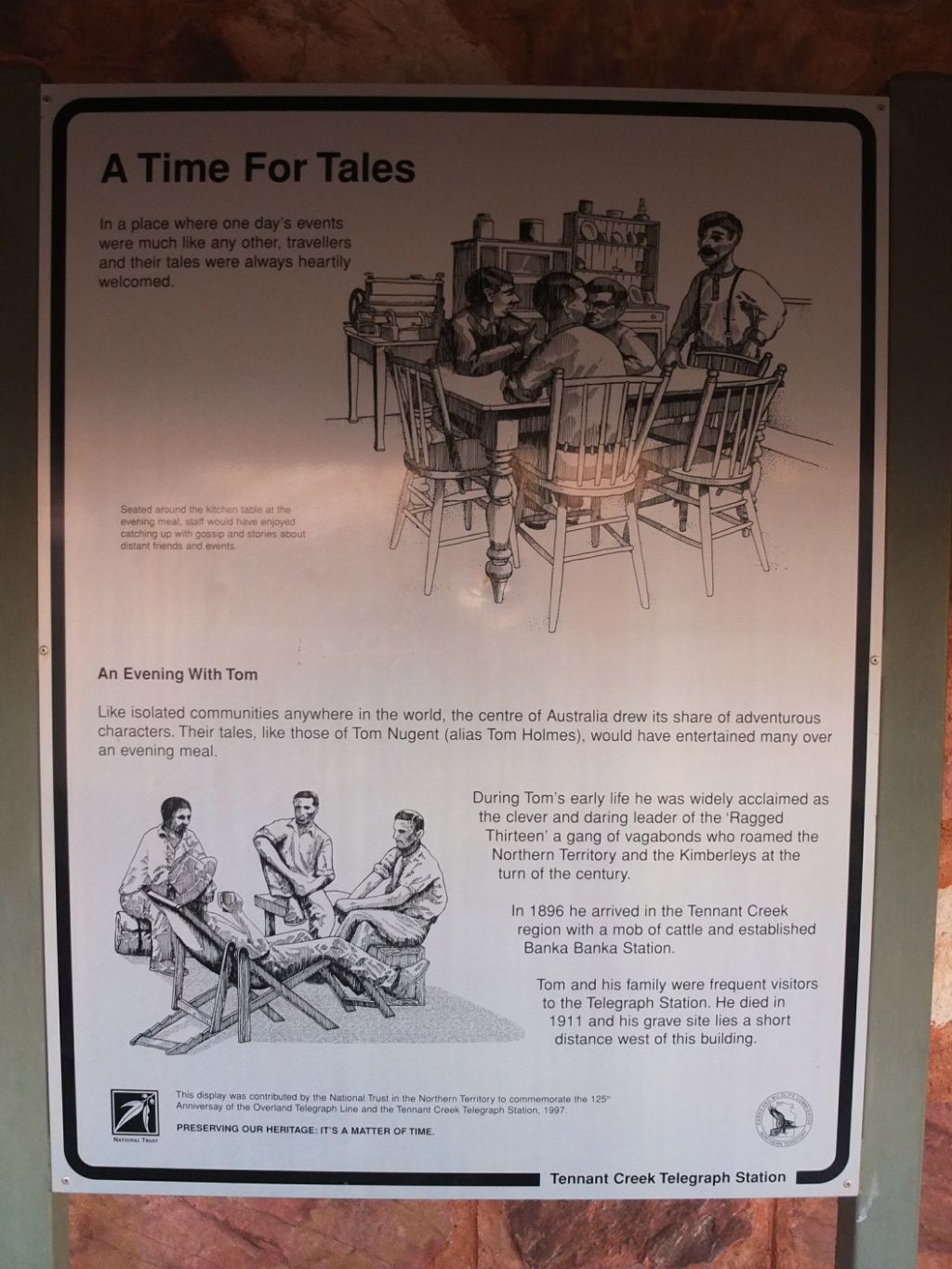
A Time for Tales
In a place where one day’s events were much like any other, travellers and their tales were always heartily welcomed. Seat around the kitchen table at the evening meal, staff would have enjoyed catching up with gossip and stories about distant friends and events.
An Evening with Tom
Like isolated communities anywhere in the world, the centre of Australia drew its share of adventurous characters. Their tales, like those of Tom Nugent (alias Tom Holmes), would have entertained many over an evening meal.
During Tom’s early life he was widely acclaimed as the clever and daring leader of the ‘Ragged Thirteen’ a gang of vagabonds who roamed the Northern Territory and the Kimberleys at the turn of the century.
In 1896 he arrived in the Tennant Creek region with a mob and established Banka Banka Station.
Tom and his family were frequent visitors to the Telegraph Station. He died in 1911 and his grave lies a short distance west of this building.
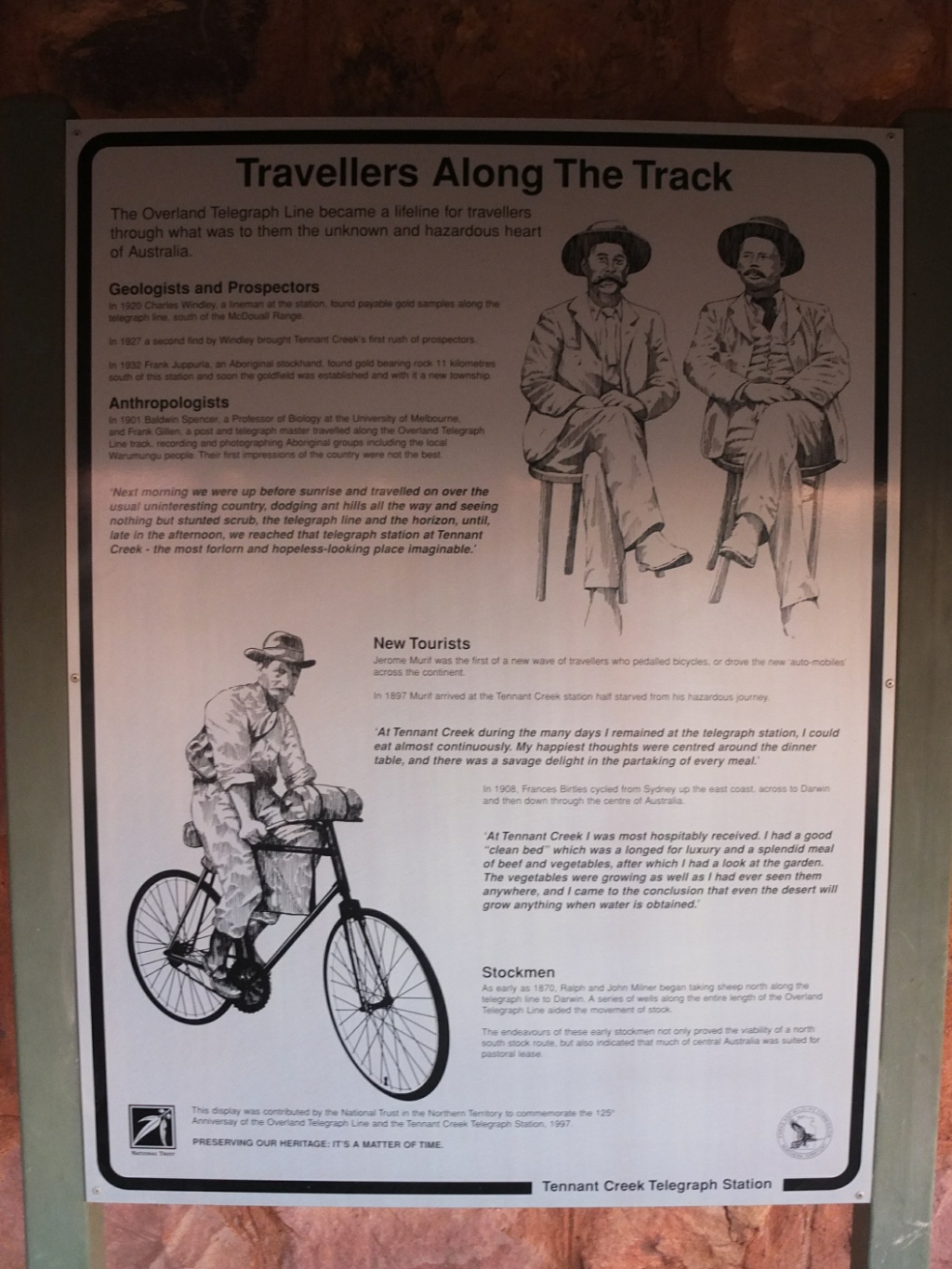
Travellers Along the Track
The Overland Telegraph Line became a linelife for travellers through what was to them the unknown and hazardous heart of Australia.
Geologist and Prospectors
In 1920 Charles Windey, a lineman at the station, found payable gold samples along the telegraph line, south of the McDouall Ranges.
in 1927 a second find by Windley brought Tennant Creek’s first rush of prospectors.
in 1932 Franck Juppurla, an Aboriginal stockhand, found gold bearing rock 11 kilometres south of this station and soon the goldfield was established and with it a new township.
Anthropologists
In 1901 Baldwin Spencer, a professor of Biology at the University of Melbourne, and Frank Gillen, a post and telegraph master travelled along the Overland Telegraph Line track, recording and photographing Aboriginal groups including the local Warumungu people. Their first impressions of the country were not the best.
New Tourists
Jerome Murif was the first of a new wave of travellers who pedalled bicycles, or drove the new auto-mobiles across the continent.
In 1897 Murif arrived at the Tennant Creek station half starved from hazardous journey.
‘At Tennant Creek during the many days I remained at the telegraph station, I could eat almost continuously. My happiest thoughts were centred around the dinner table, and there was a savage delight in the partaking of every meal.’
In 1908, Frances Birtles cycled from Sydney up the east coast, across to Darwin and then down through the centre of Australia.
‘At Tennant Creek I was most hospitably received. I had a good “clean bed” which was a longed for luxury and a splendid meal of beef and vegetables, after which I had a look at the garden. The vegetables were growing as well as I had ever seen then anywhere, and I came to the conclusion that even the desert will grow anything when water is obtained.’
Stockmen
As early as 1870, Ralph and John Milner began taking sheep north along the telegraph line to Darwin. A series of wells along the centre length of the Overland Telegraph Line aided the movement of stock.
The endeavours of these early stockmen not only proved the viability of a north south stock route, but also indicated that much of central Australia was suited for pastoral leave.
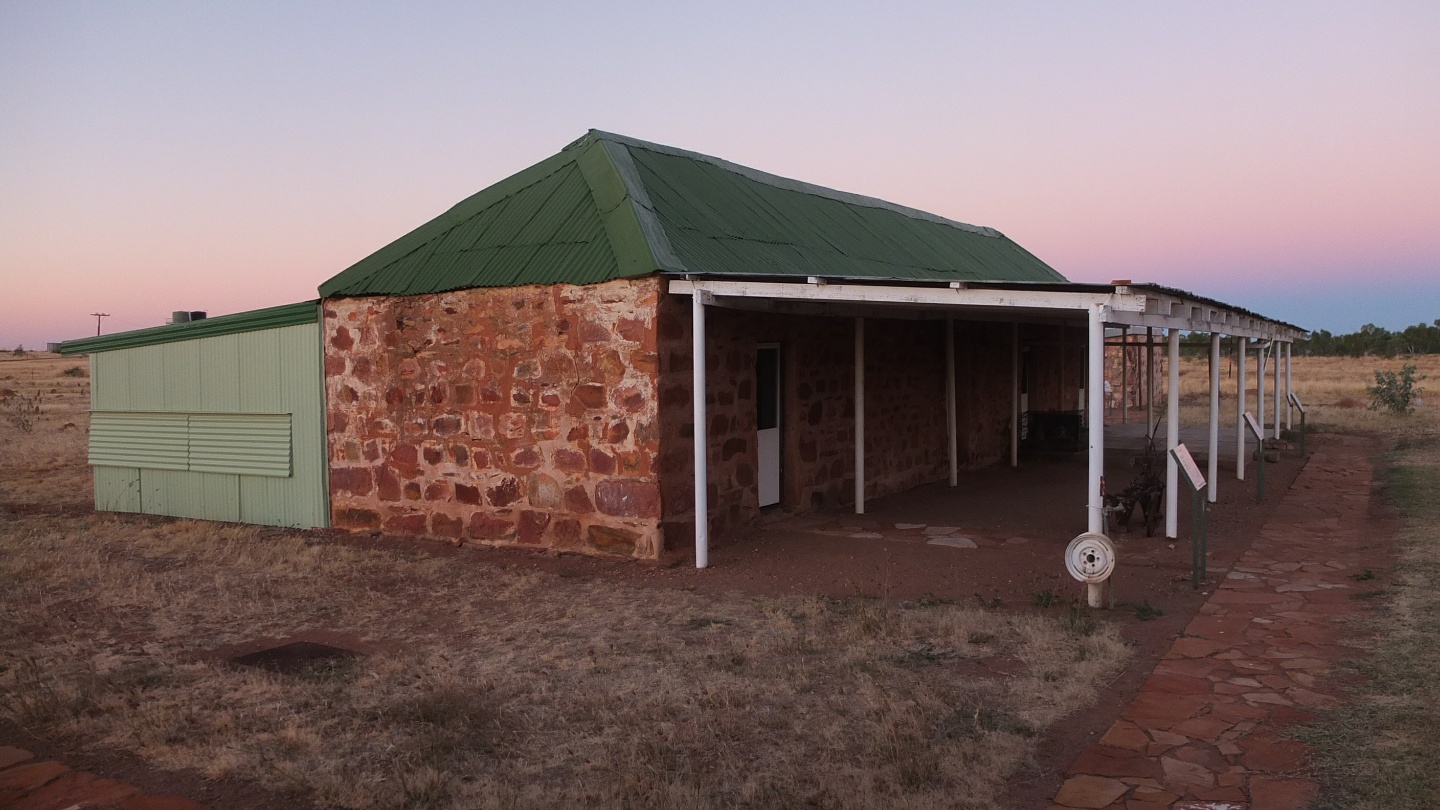
Continuing the visit :-)
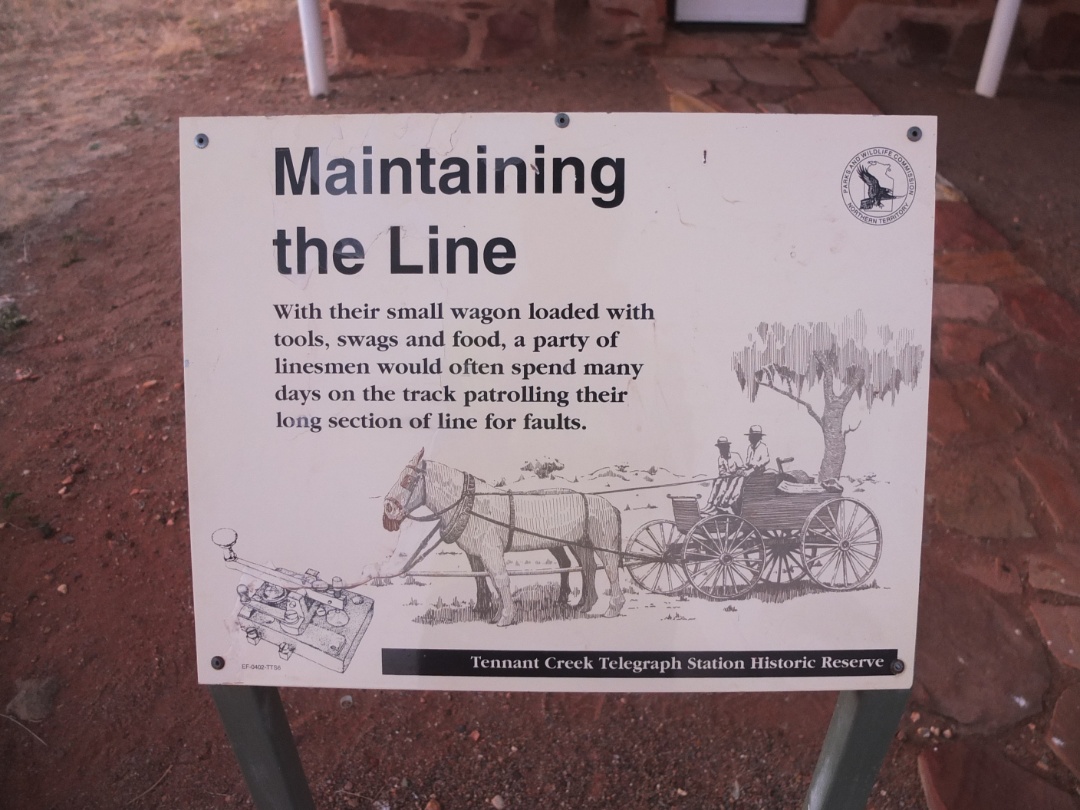
Maintaining the Line
With their small wagon loaded with tools, swags and food, a party of linesmen would often spend many days on the track patrolling their long section of line for faults.
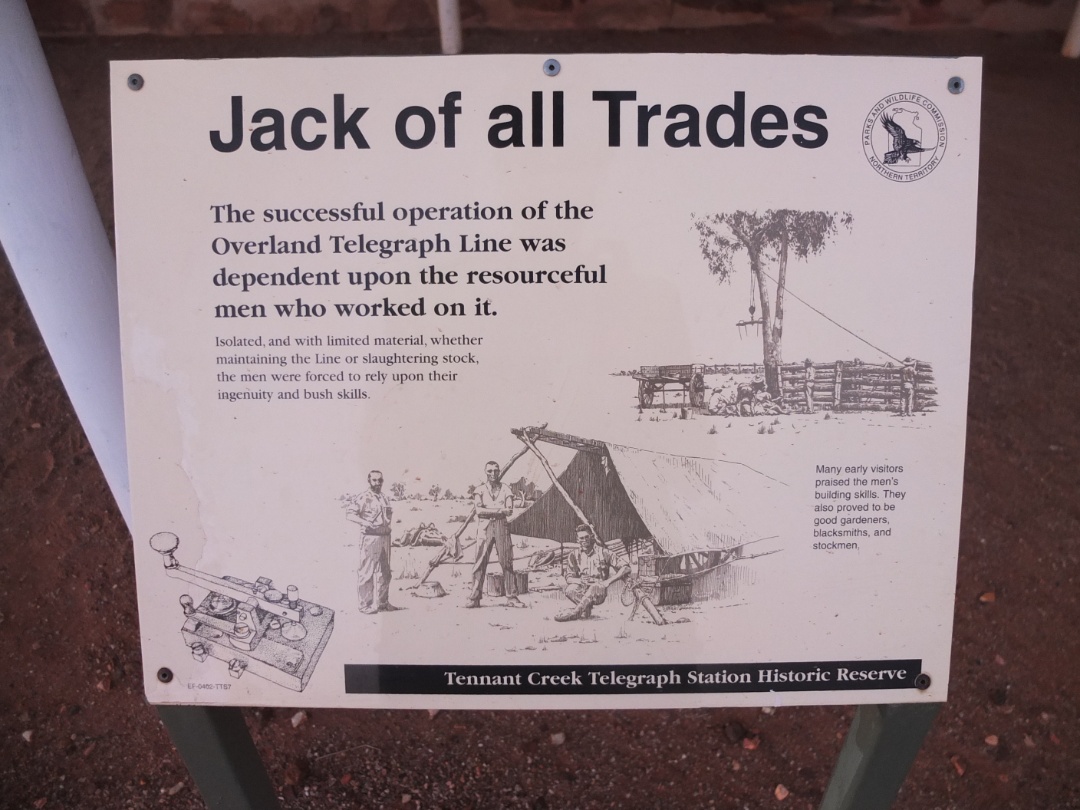
Jack of all Trades
The successful operation of the Overland Telegraph Line was dependent Upon the resourceful men who worked on it.
Isolated, and with limited material, whether maintaining the Line or slaughtering stock, the men were forced to rely upon their ingenuity and bush skills.Many early visitors praised the men’s building skills. They also proved to be good gardeners, blacksmiths, and stockmen.
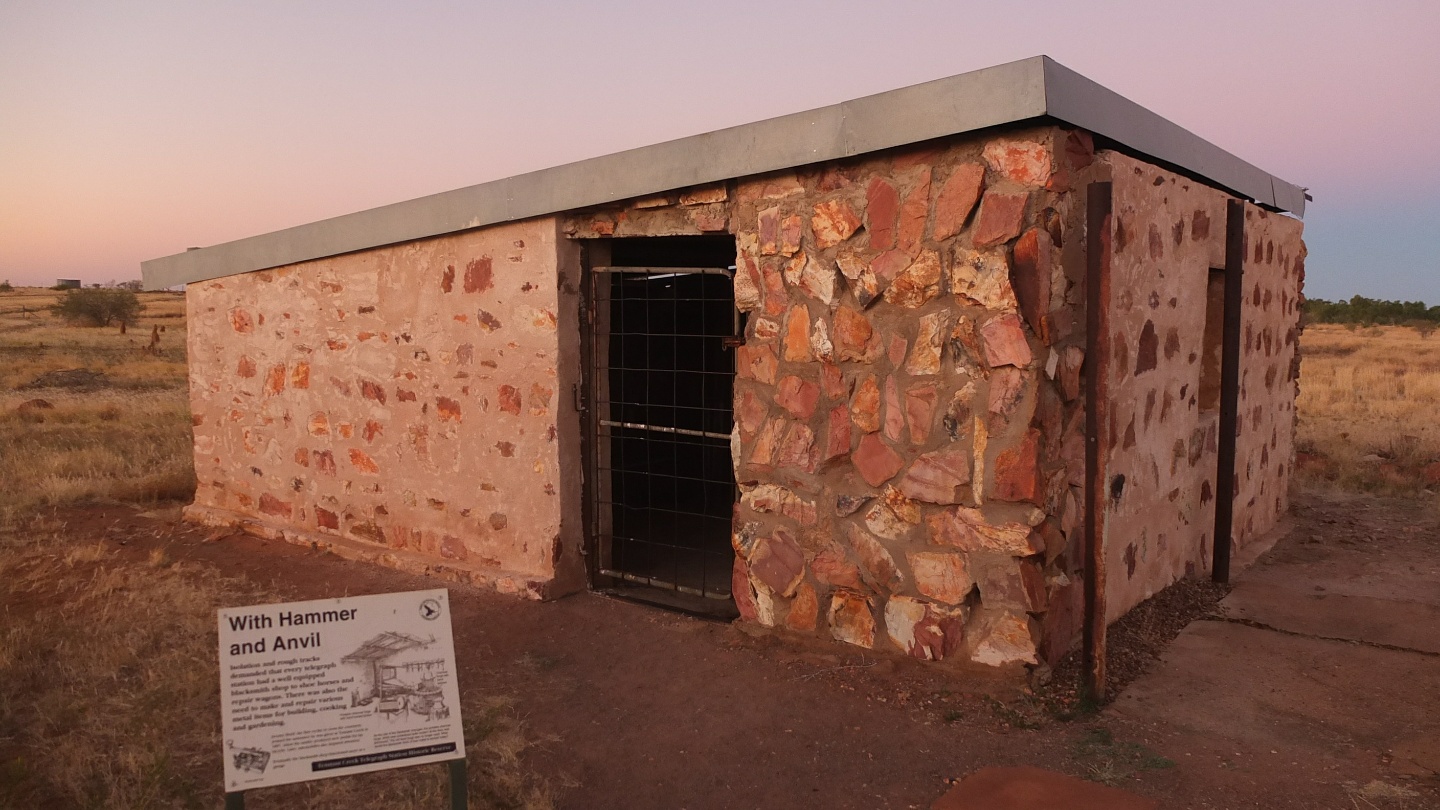
And the last building.
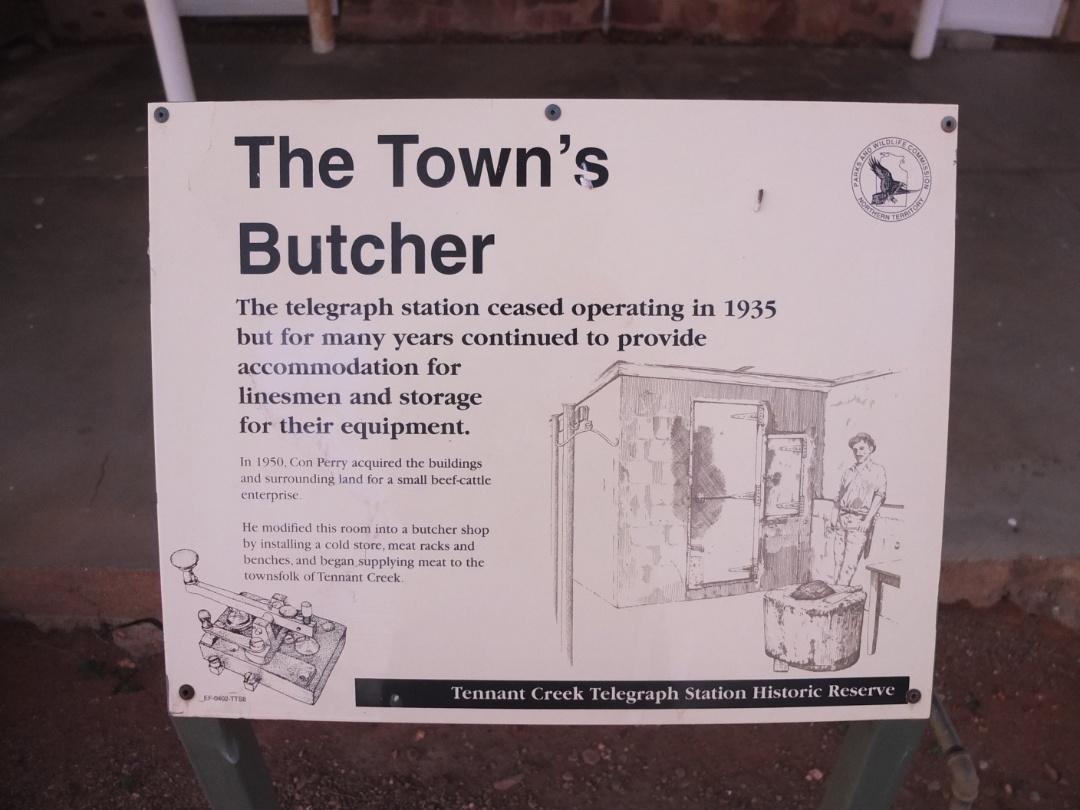
In 1950, Con Perry acquired the buildings and surrounding land for small beef-cattle enterprise.
He modified this room into a butcher shop by installing a cold store, meat racks and benches, and began supplying meat to the townsfolk of Tennant Creek.
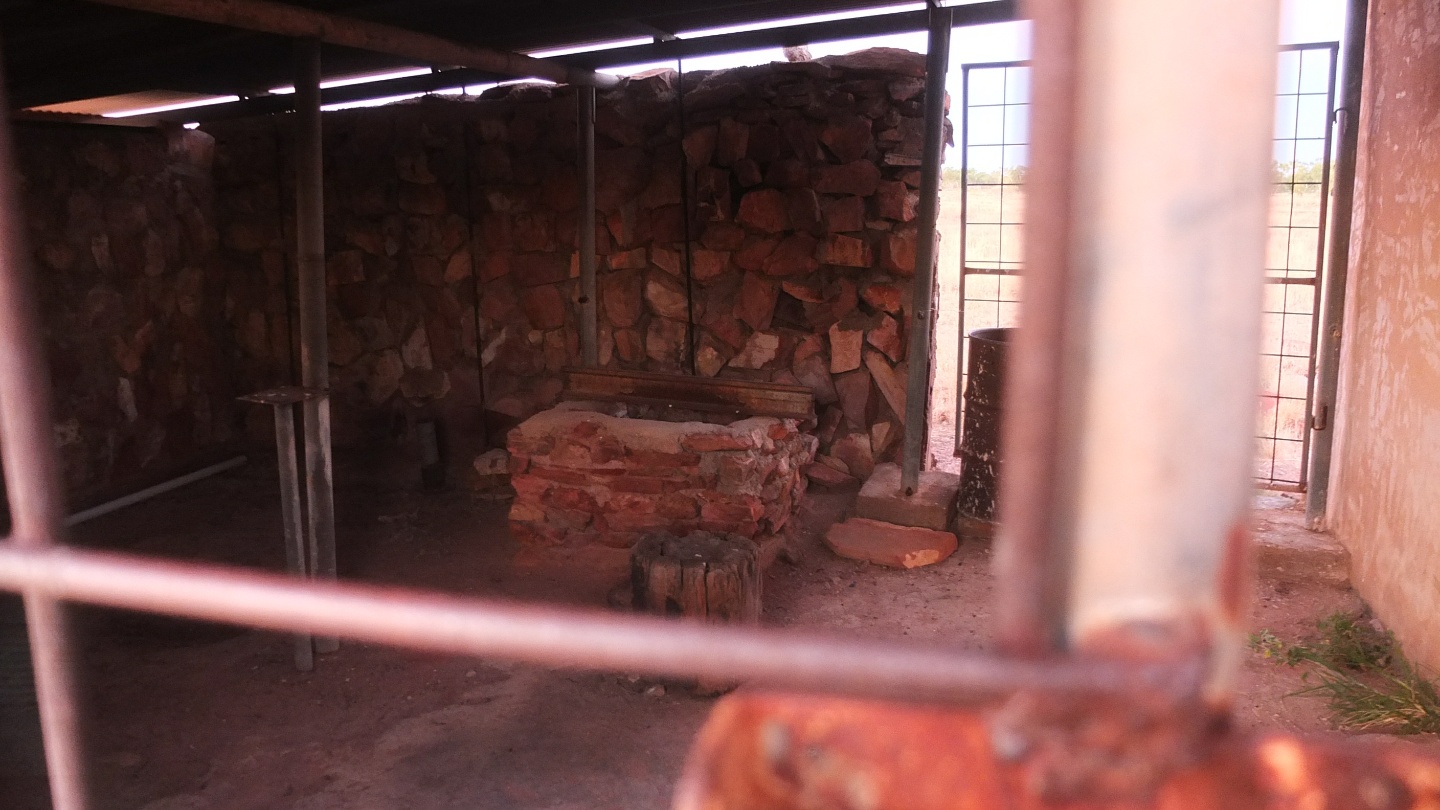
The inside of the “garage”.
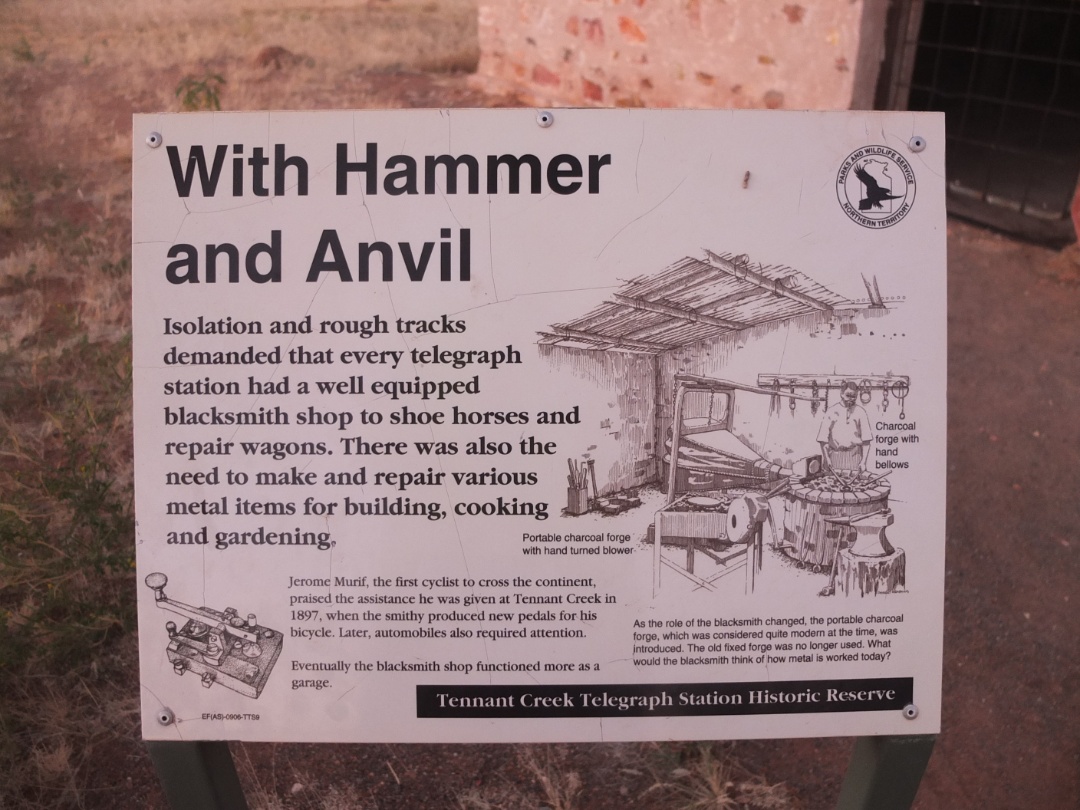
Jerome Murif, the first cyclist to cross the continent, praised the assistance he was given at Tennant Creek in 1897, when the smithy produced new pedals for his bicycle. Later, automobiles also required attention. Eventually the blacksmith shop functioned more as a garage.
As the role of blacksmith changed, the portable charcoal forge, which was considered quite modern at the time, was introduced. The old fixed forge was no longer used. What would the blacksmith think of how metal is worked today?
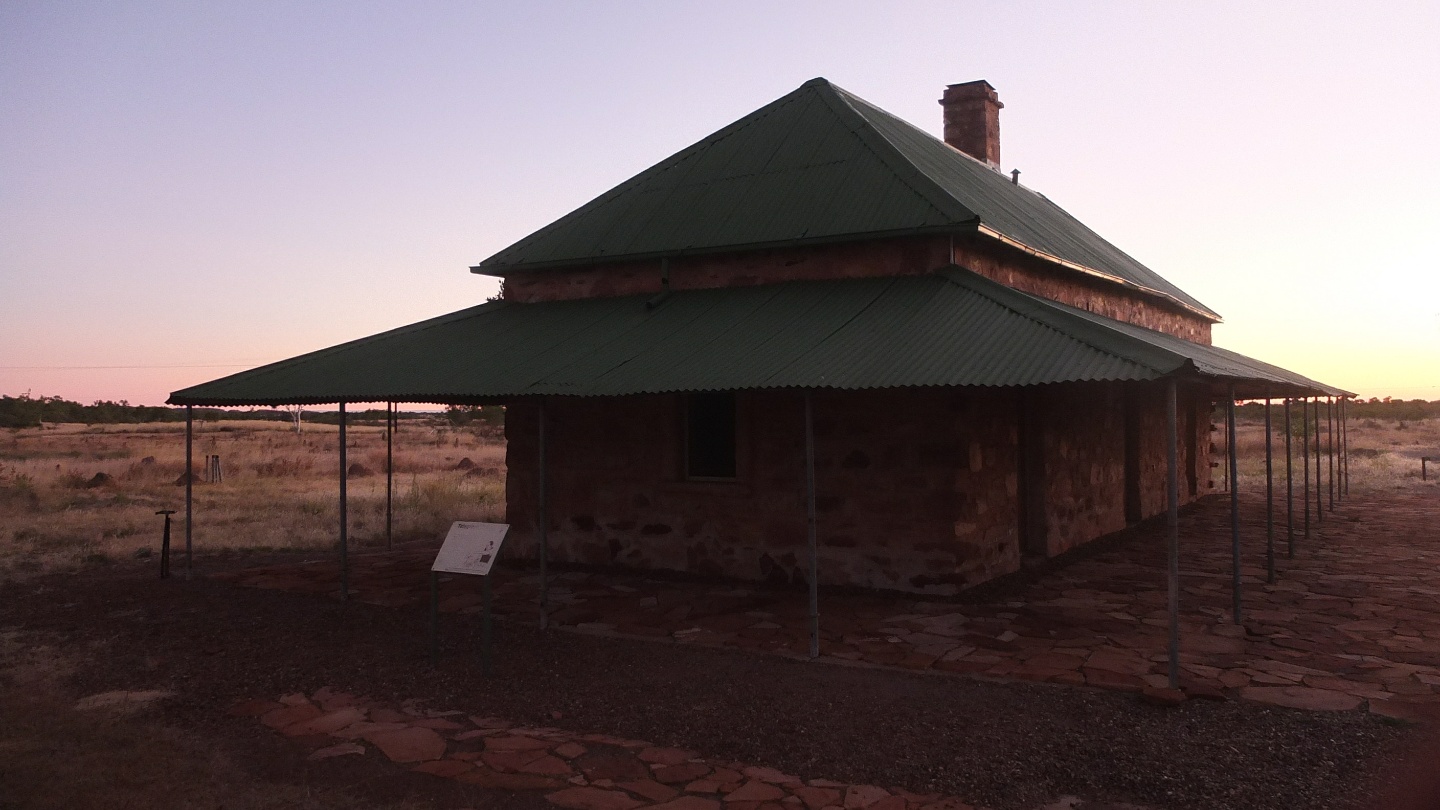
That was not the last one! I’ve forgot the most important one: The Telegraph Station itself!
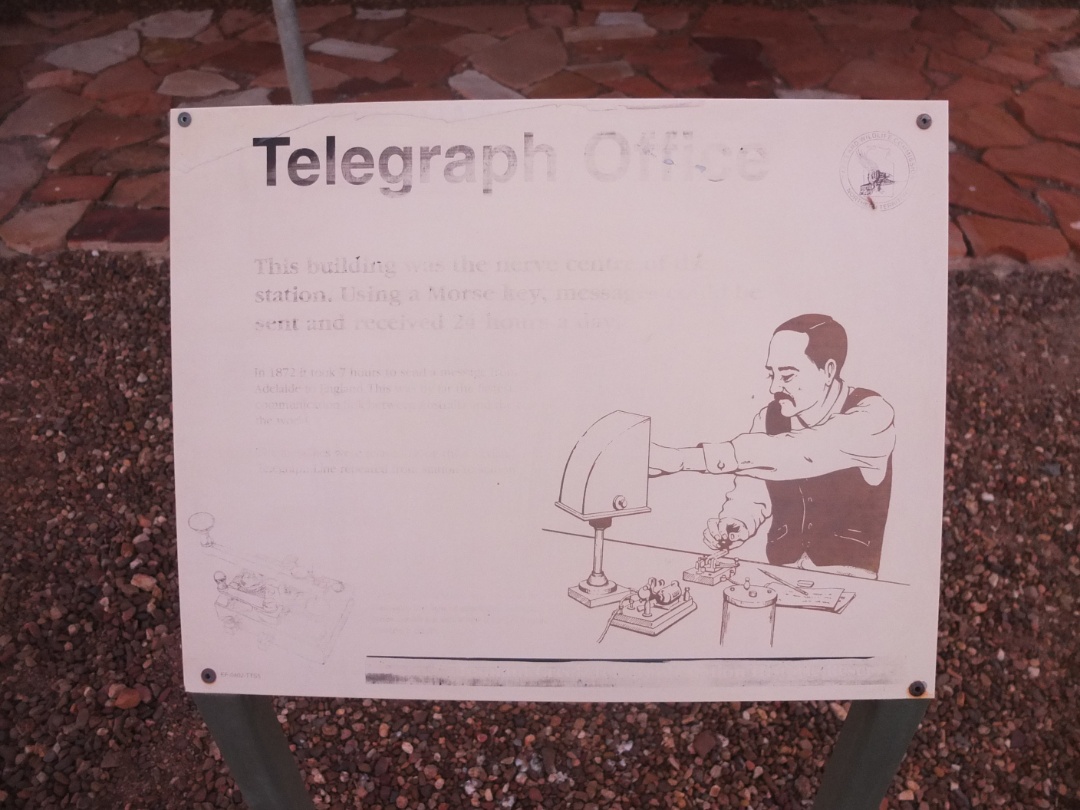
Telegraph Office
This building was the nerve centre station. Using a Morse key, messages was sent and received 24 hours a day. And I can’t read anymore…
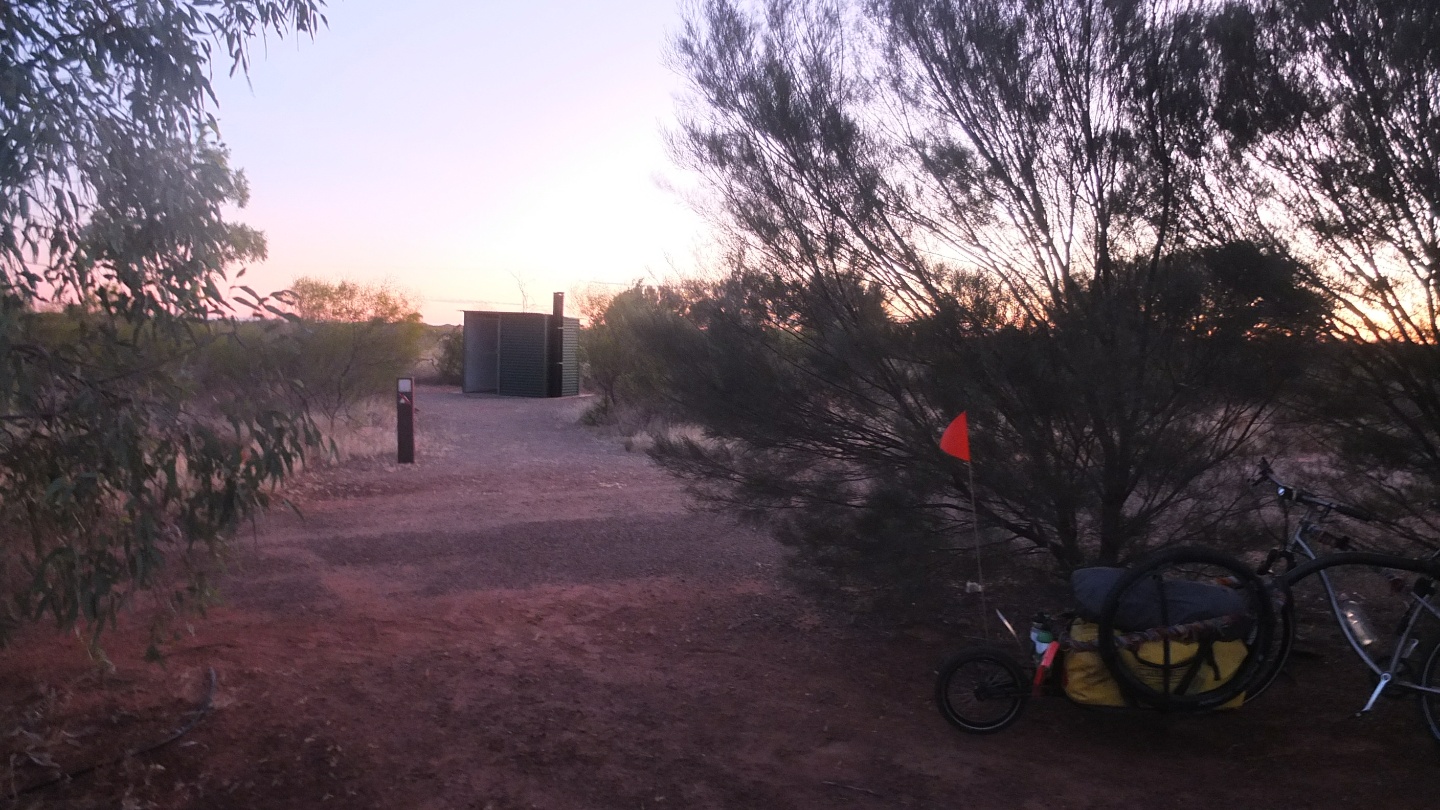
That visit was interesting :-) I’ve found my spot just next to the toilets and front a sign saying “no camping”. Bouhhhh, I’m not listening! Good night!
C’est étrange qu’avec toute la vie qui a tourné autour de cette station télégraphique, aujourd’hui elle paraît complètement abandonnée. J’aurais plutôt vu une ville se développer autour !!
Lots of information. It reminds me that Australia is a quite new country. Everything says like 19th century.
Hello Damien .. I stumbled on your blog today when researching Tom Nugent of telegraph station and Banka Banka fame on the Internet and was curious about your blog, congratulations, what a wonderful collection you have created of stories and photos.
I should imagine that you have returned home now.
I was hoping that I may use your work around the Tennant Creek area for my website which basically is the history.
(I had to smile at the library photo, and hoped we weren’t too rough “kicking you out” at 5pm hahaha ) .. But I’m no longer in Tennant Creek now as I have retired.
Wishing you many adventures, keep up the great work .. Cheers Pam
Hi Pam,
I’m glad you like it :-)
No problem, you can use any pictures you want.
I’m not home yet. I’ve stopped for Cambodia for nearly a year now where I try to save a bit of money to continue my trip towards Japan.
I get use too staying until the last minute in libraries so I was fine :-)
Cheers.